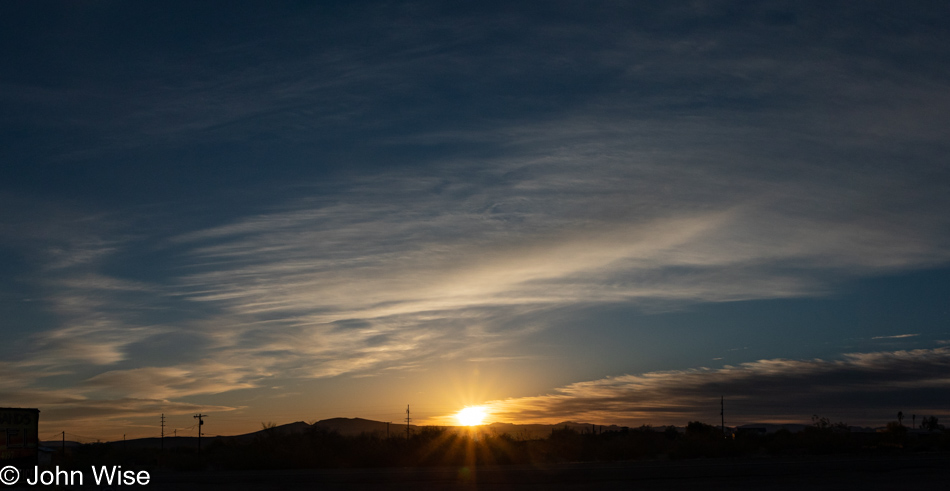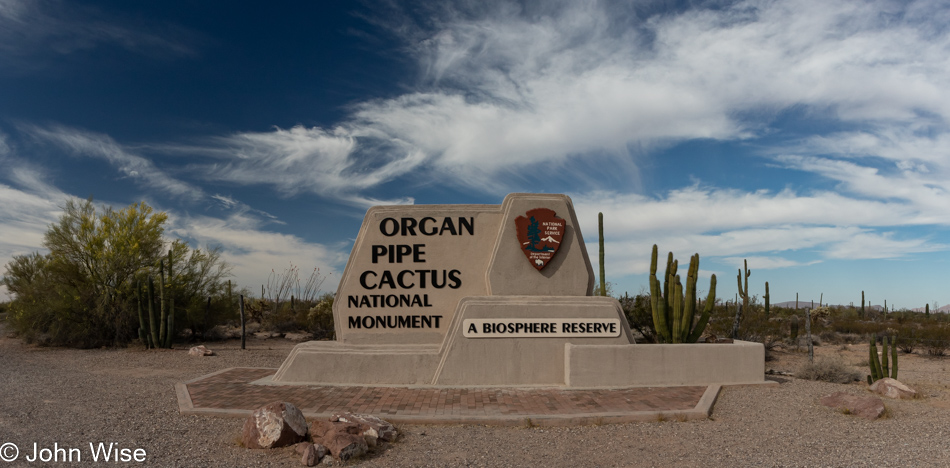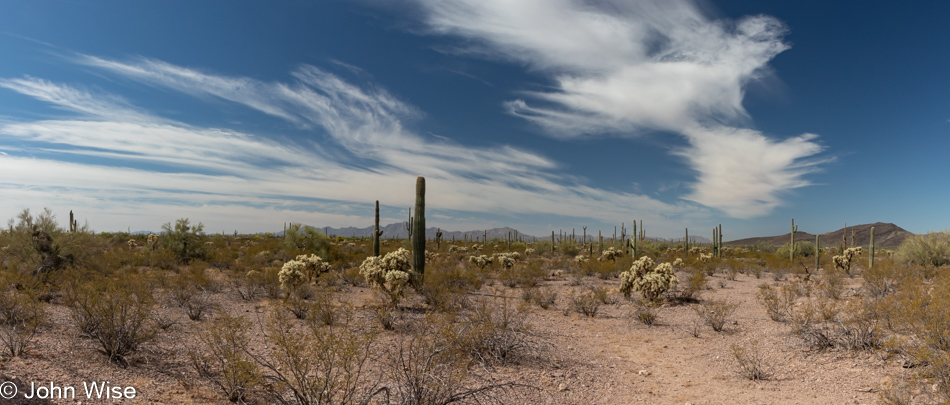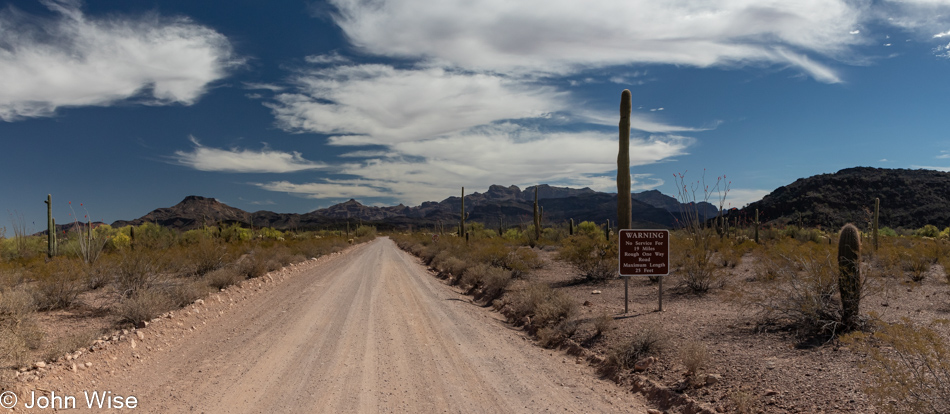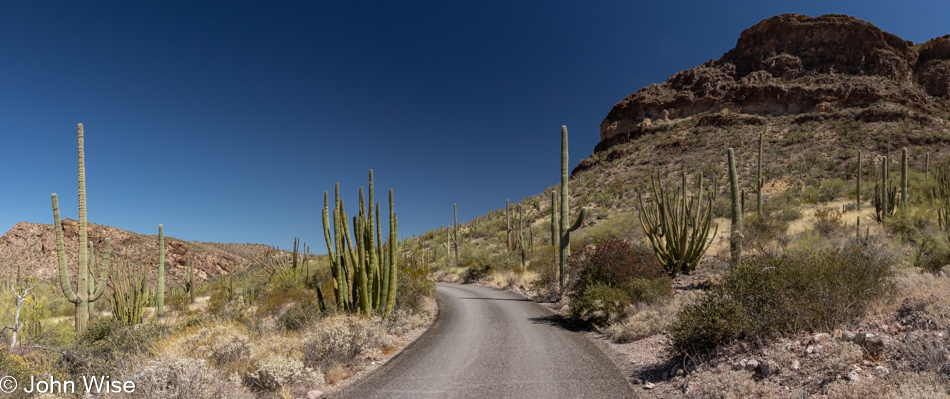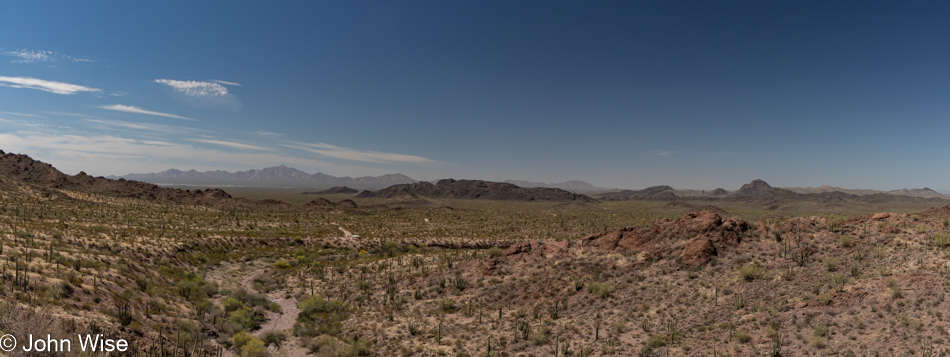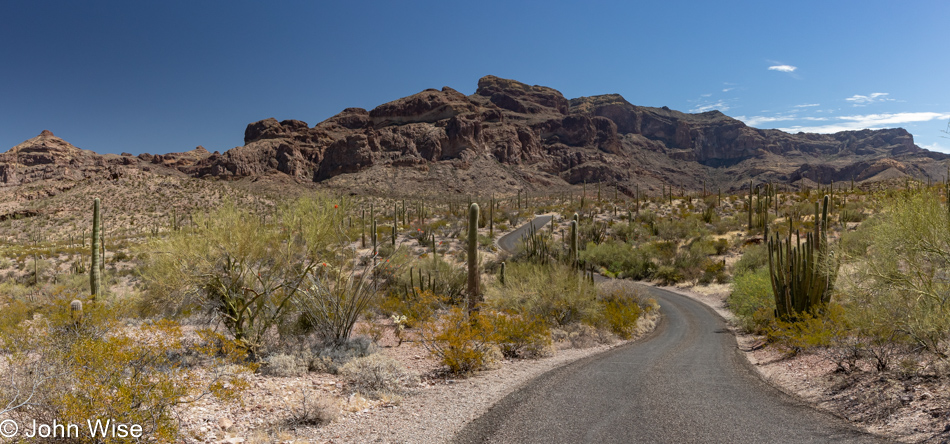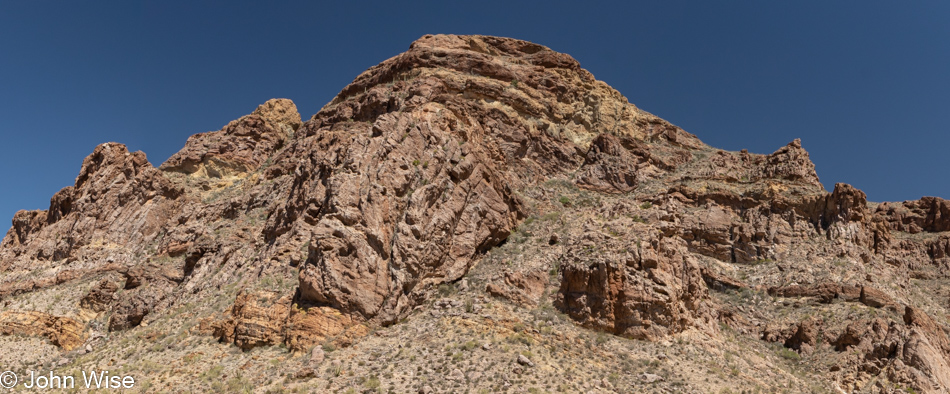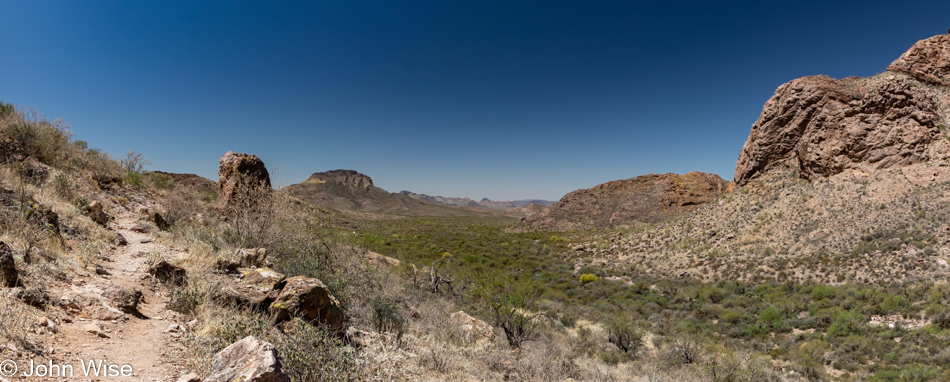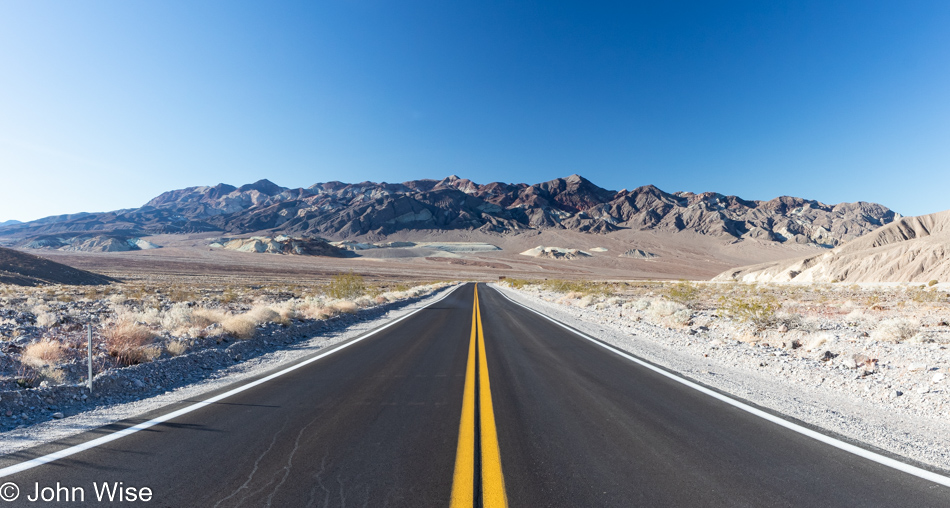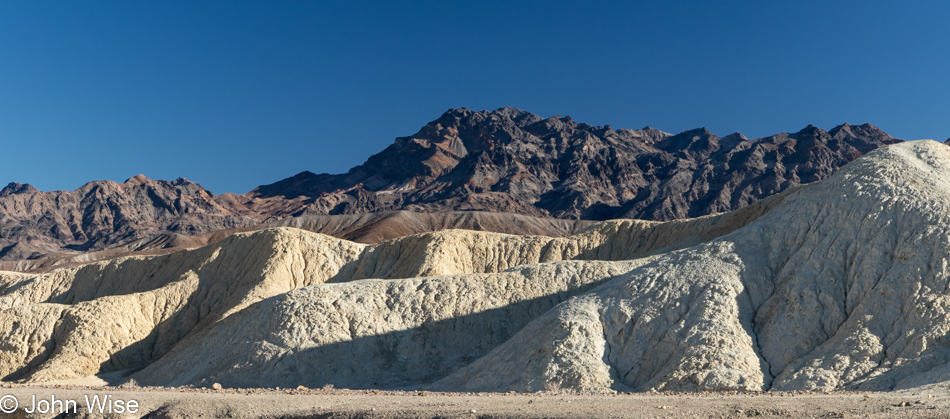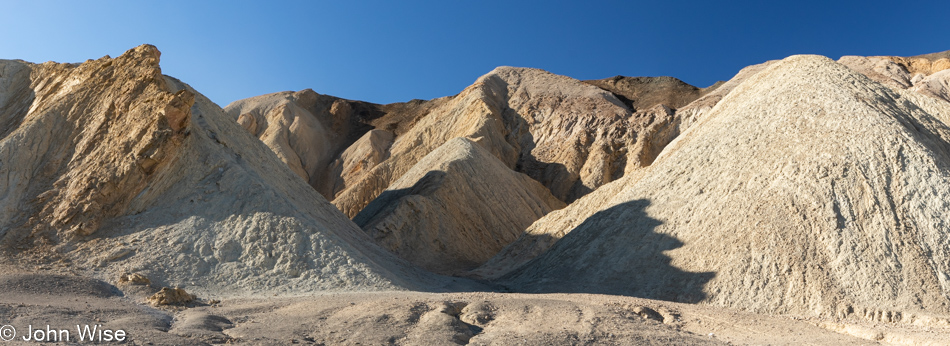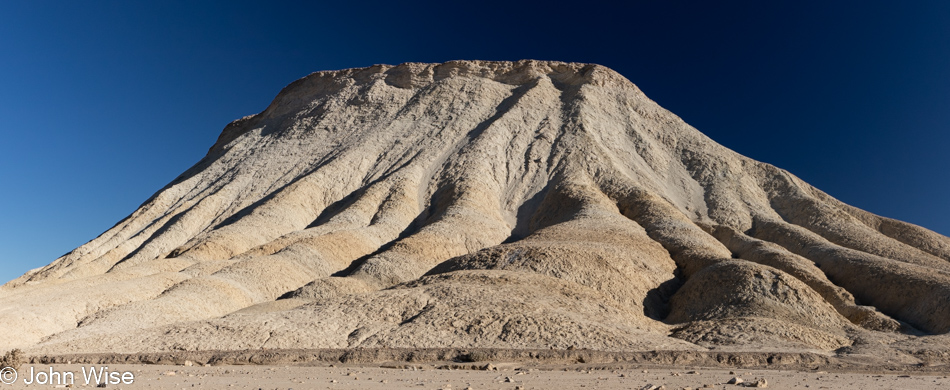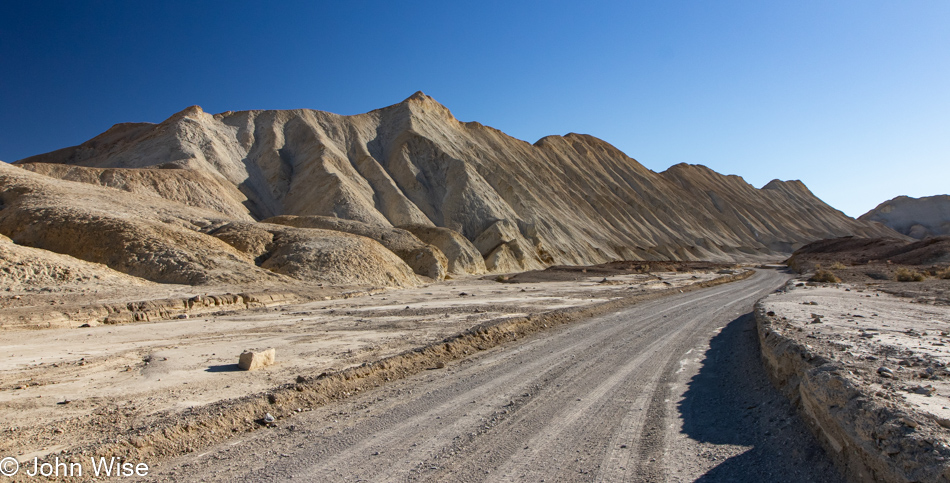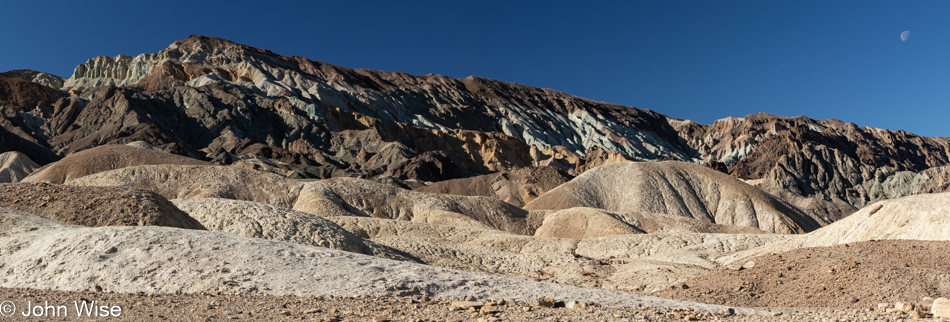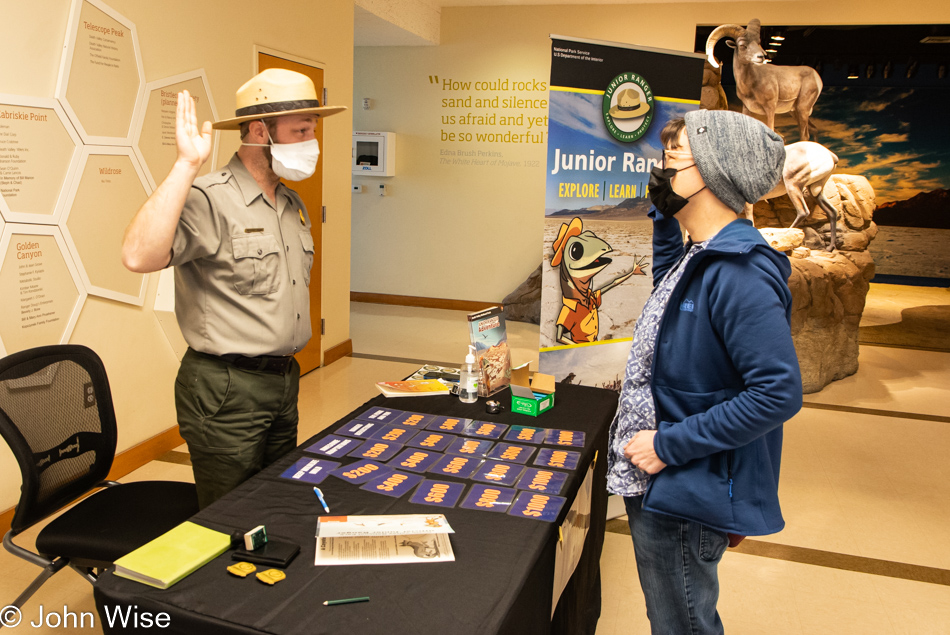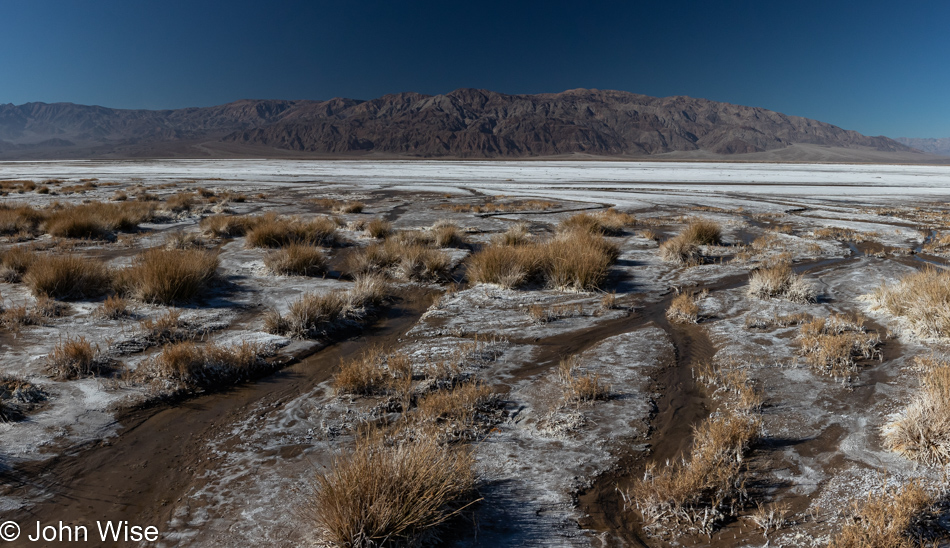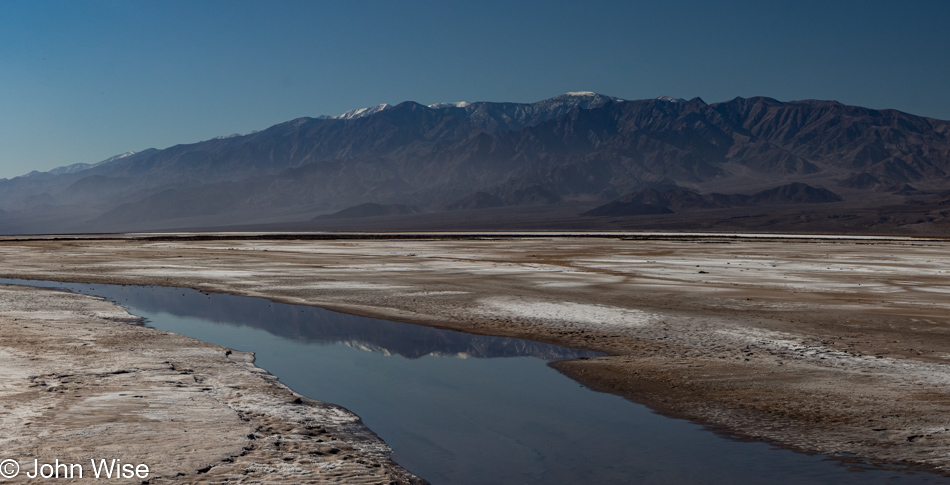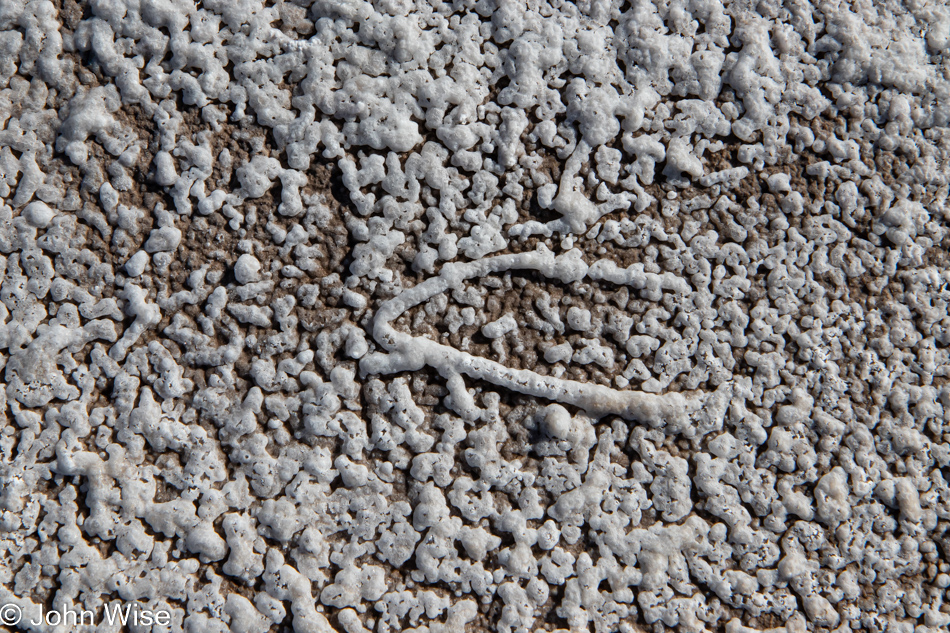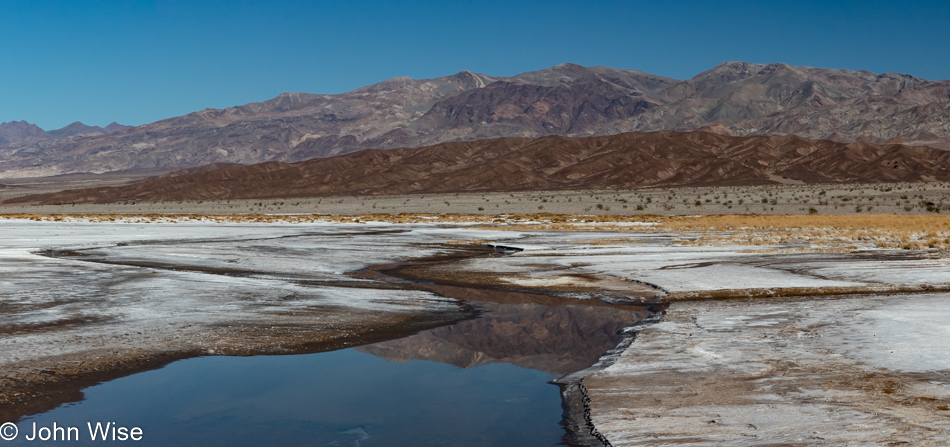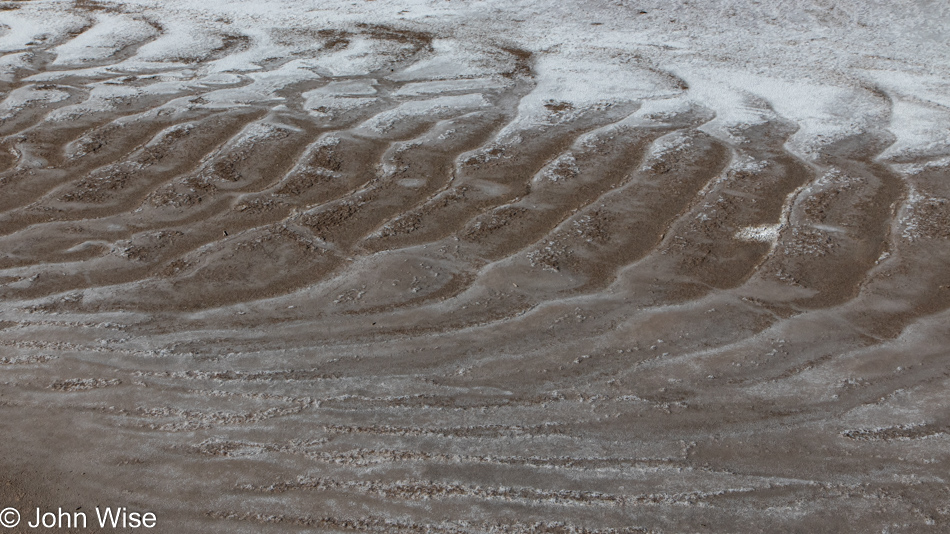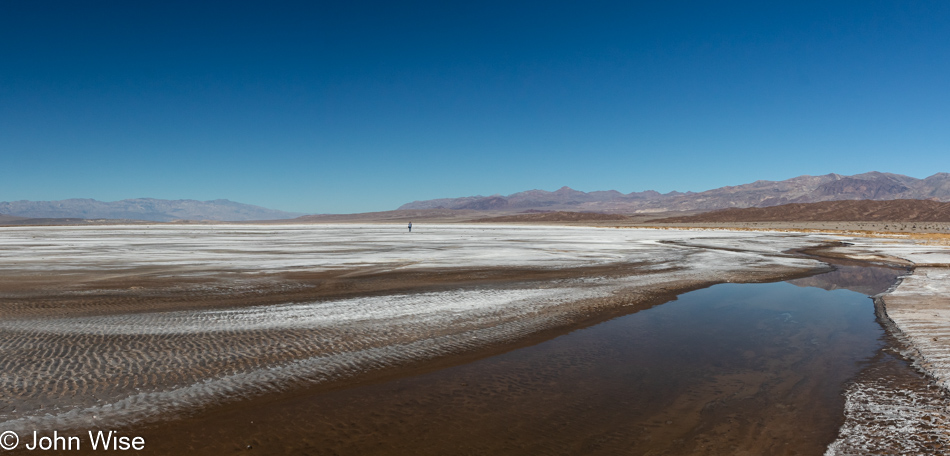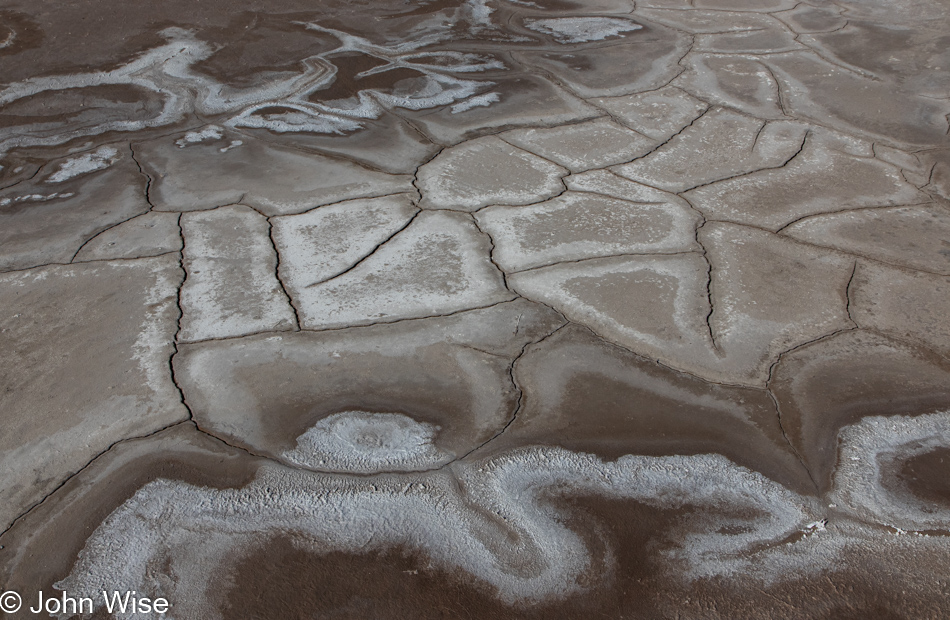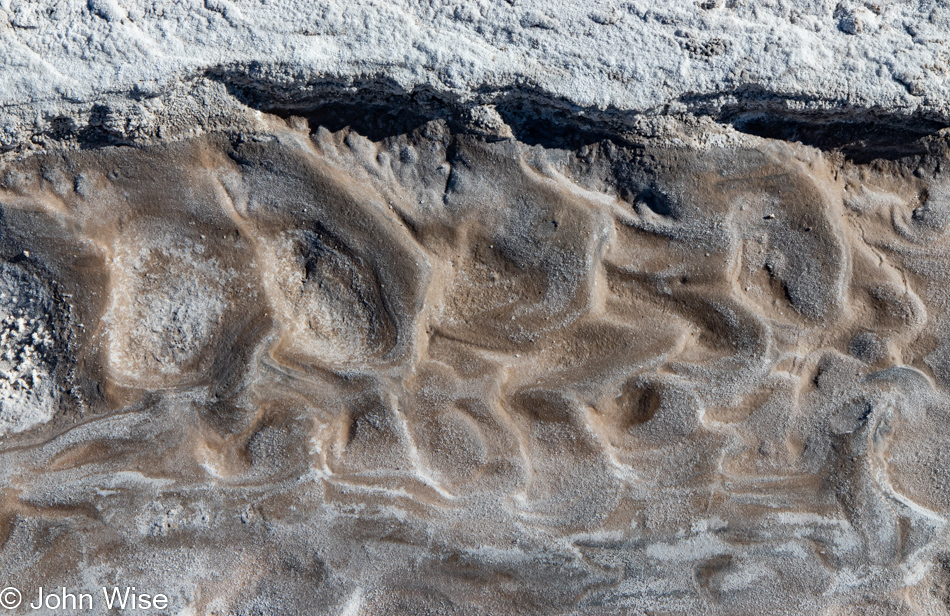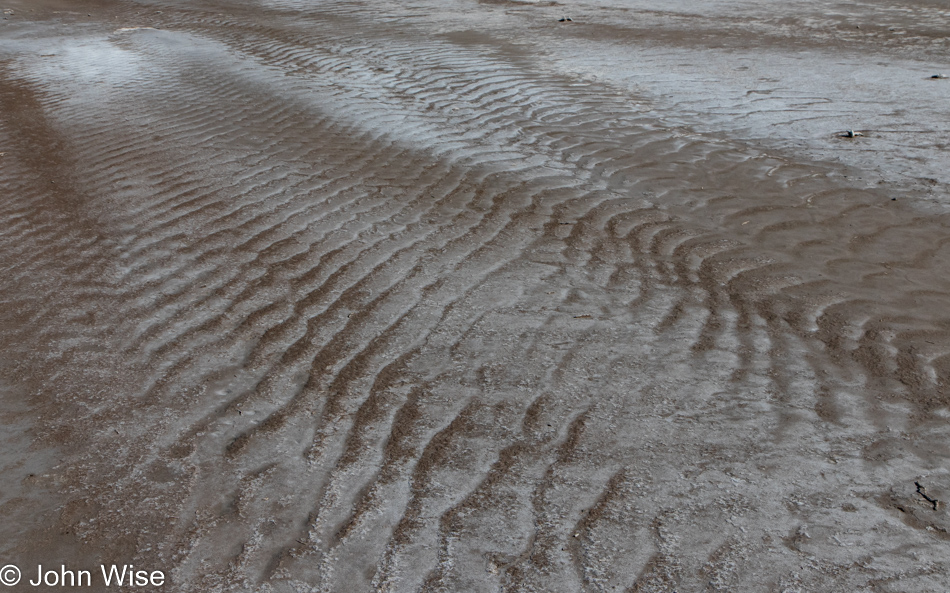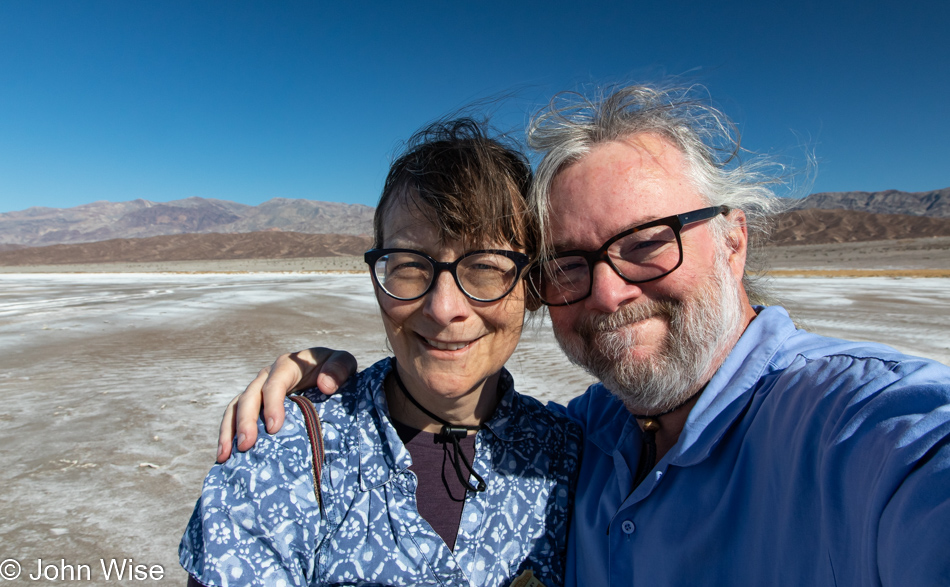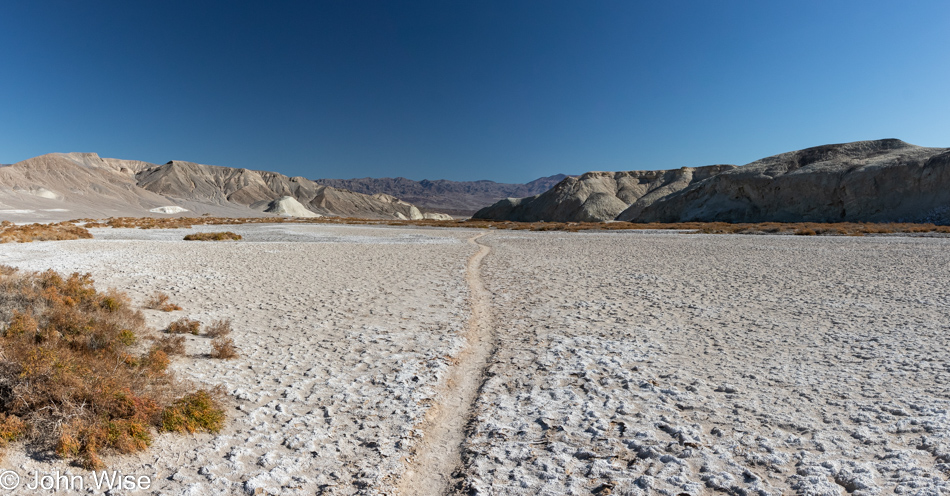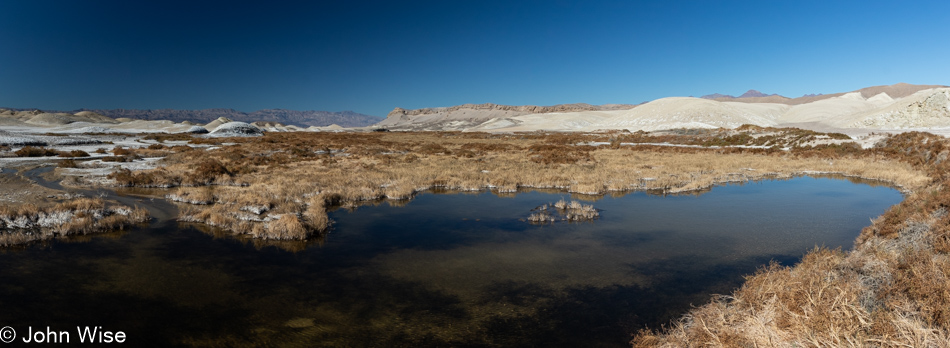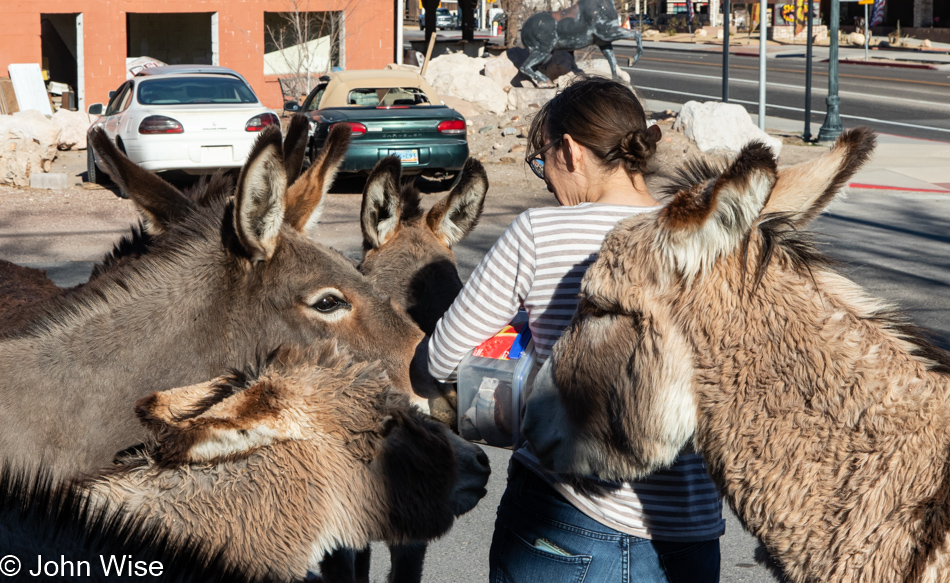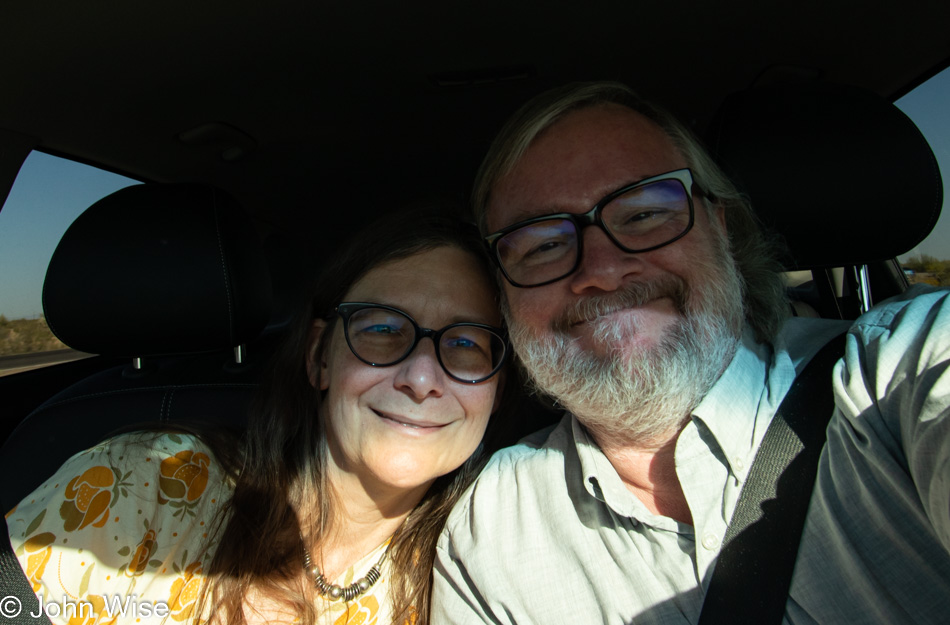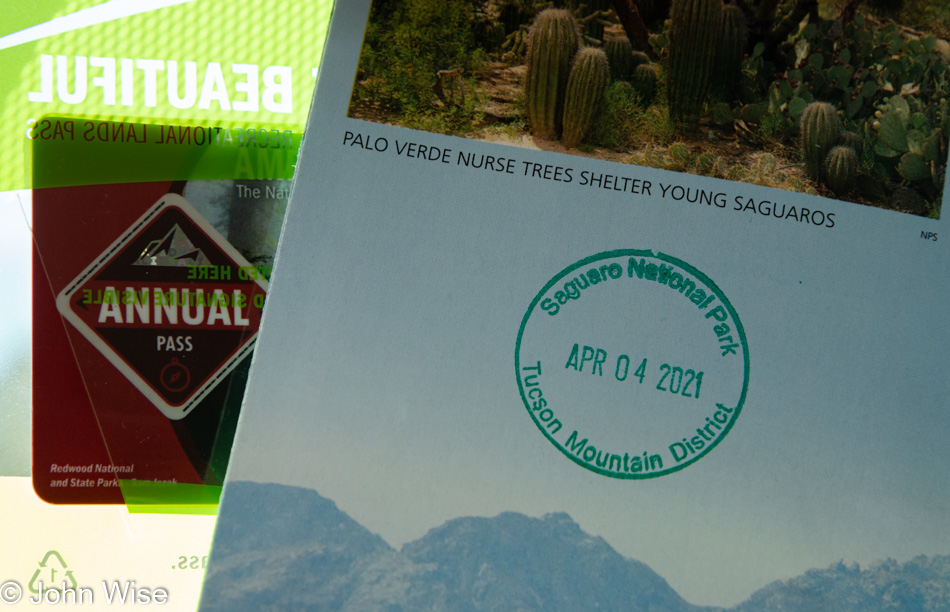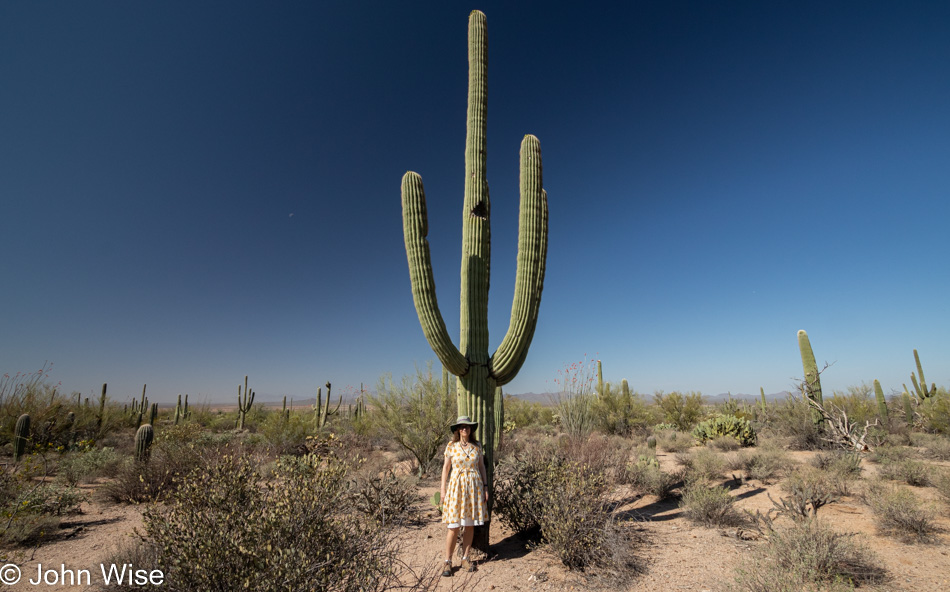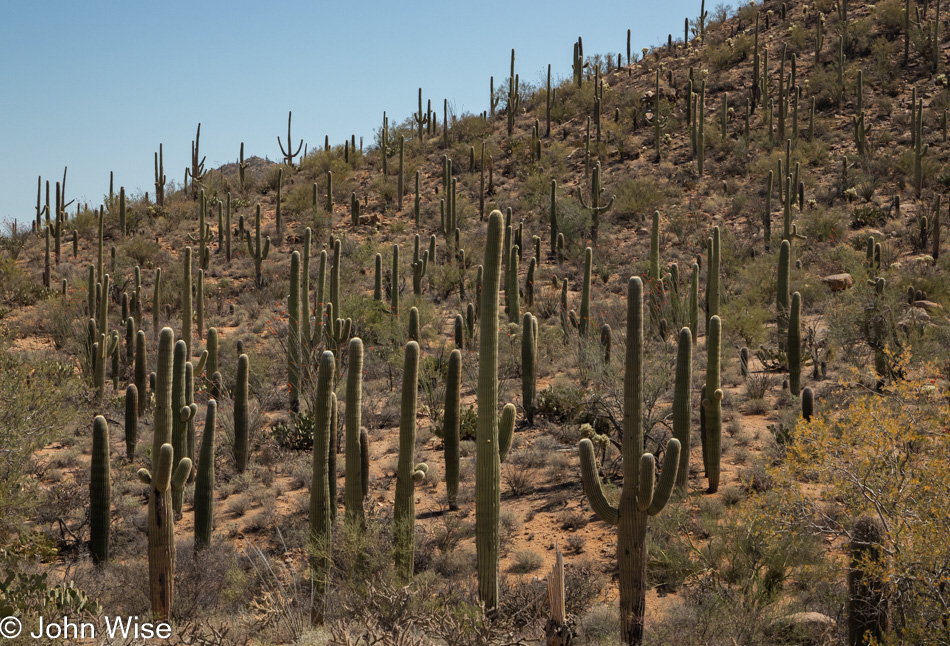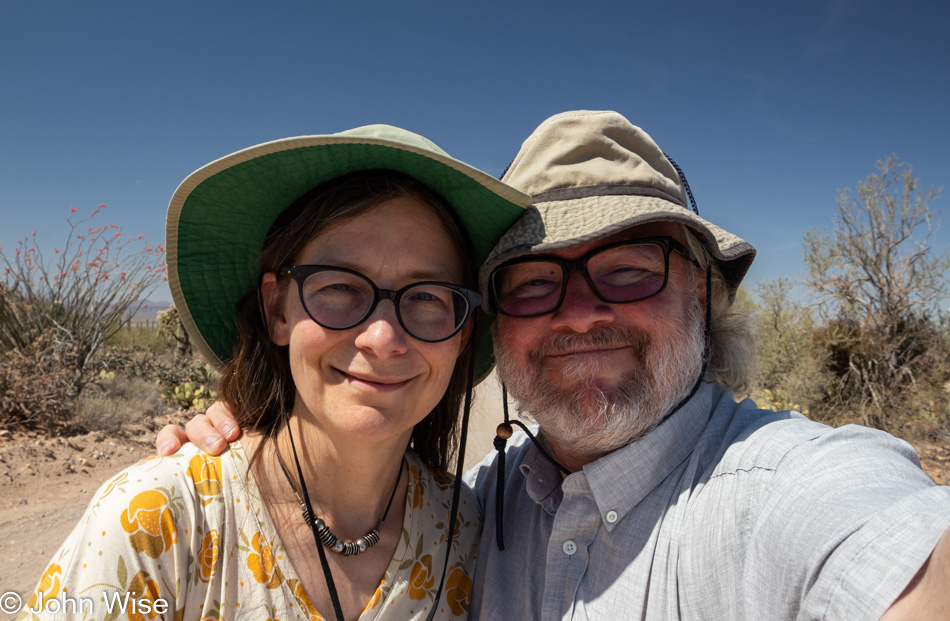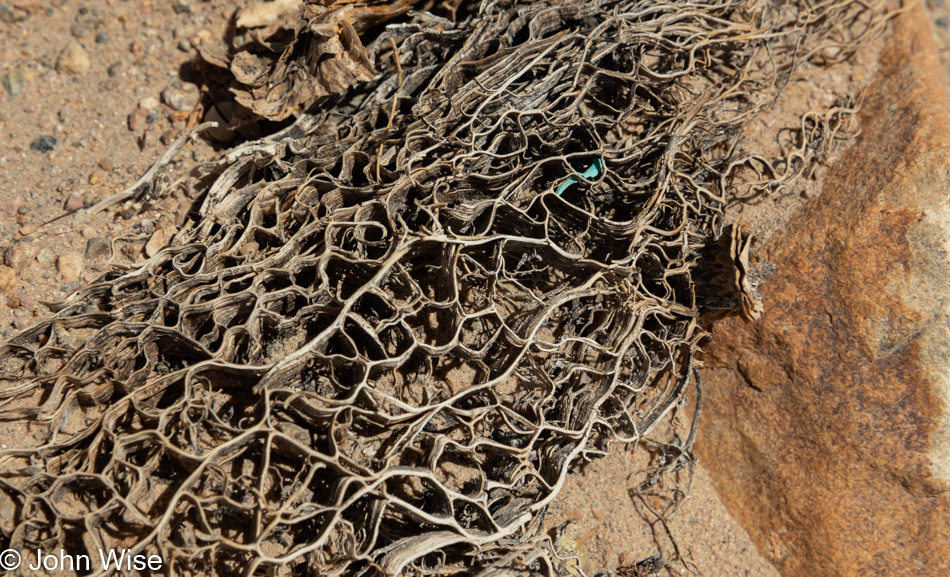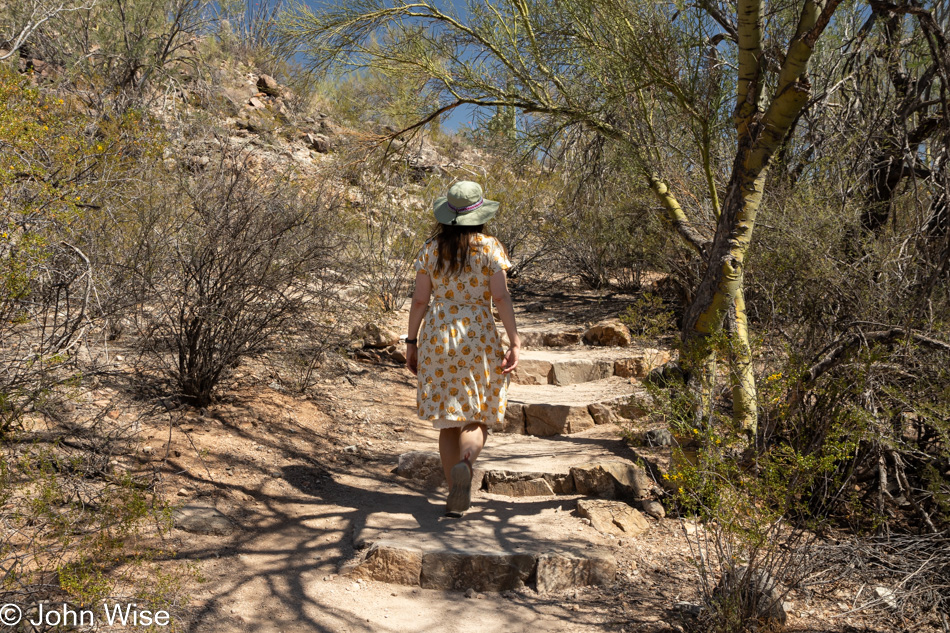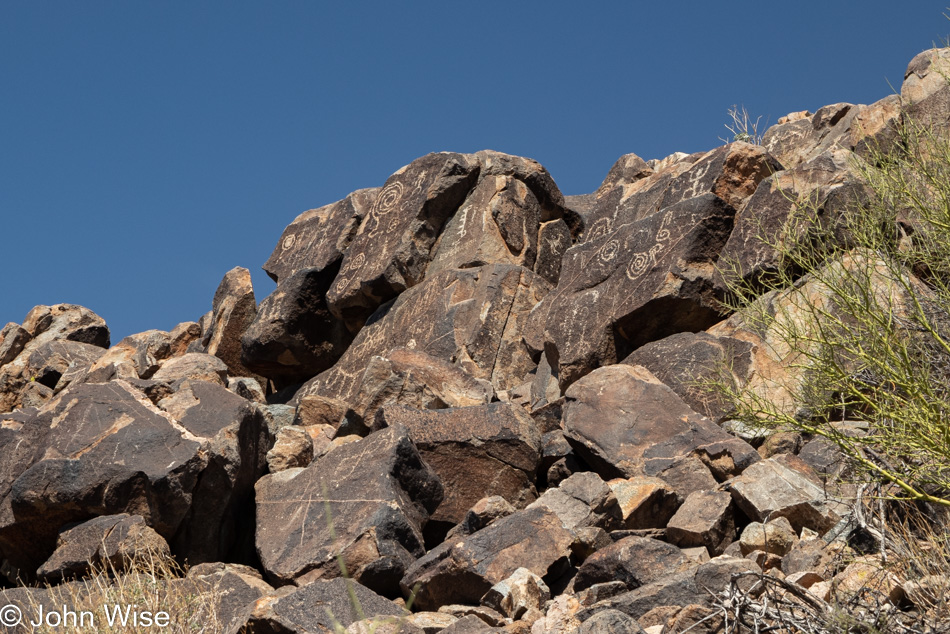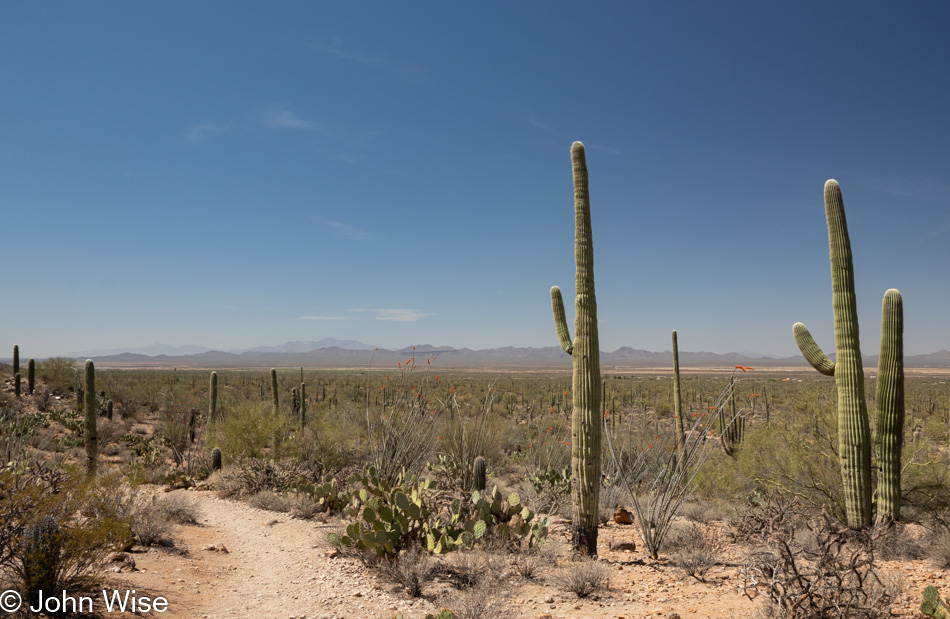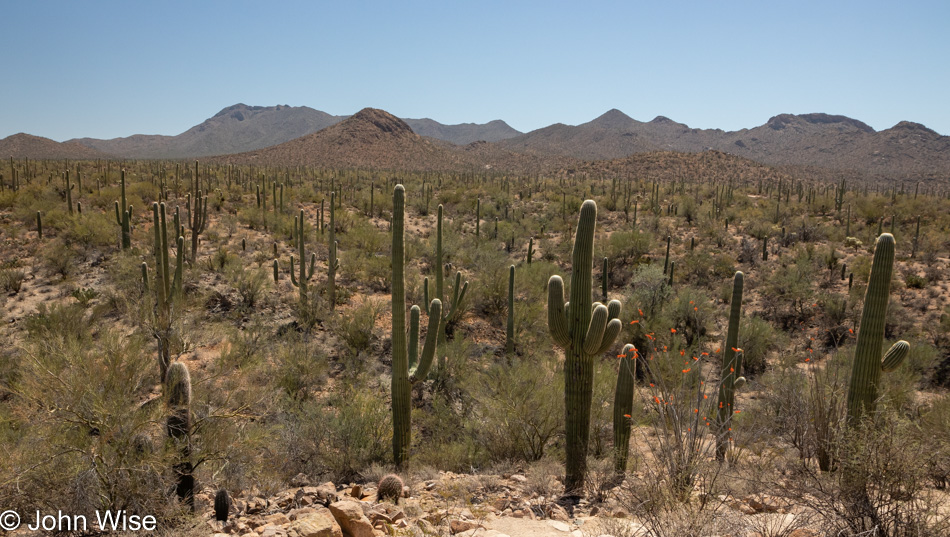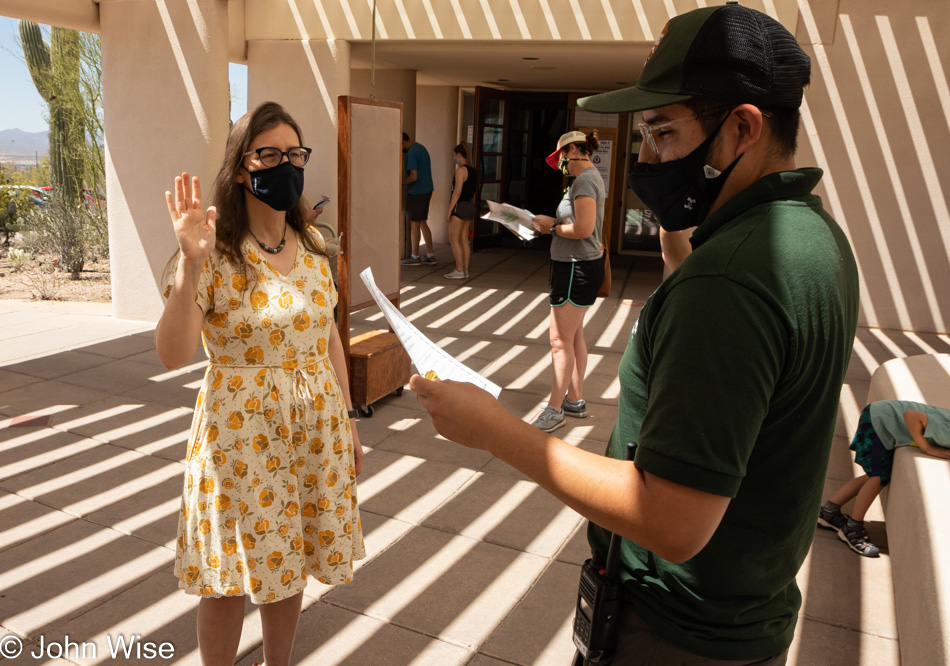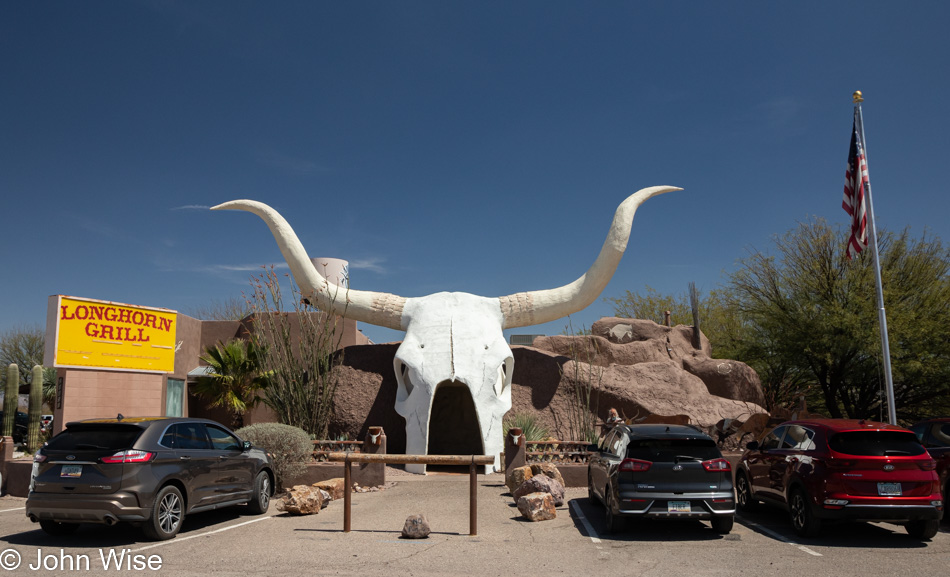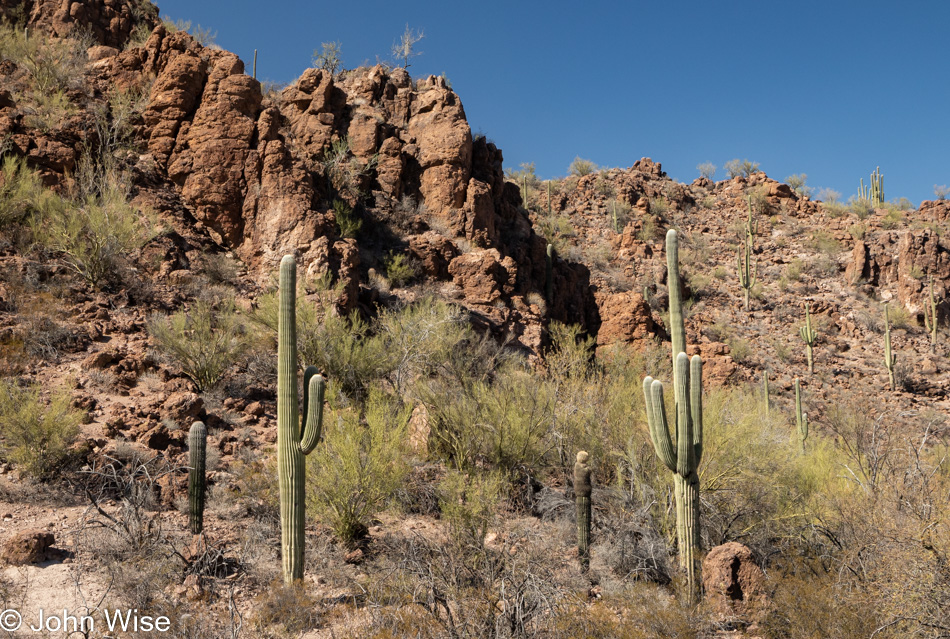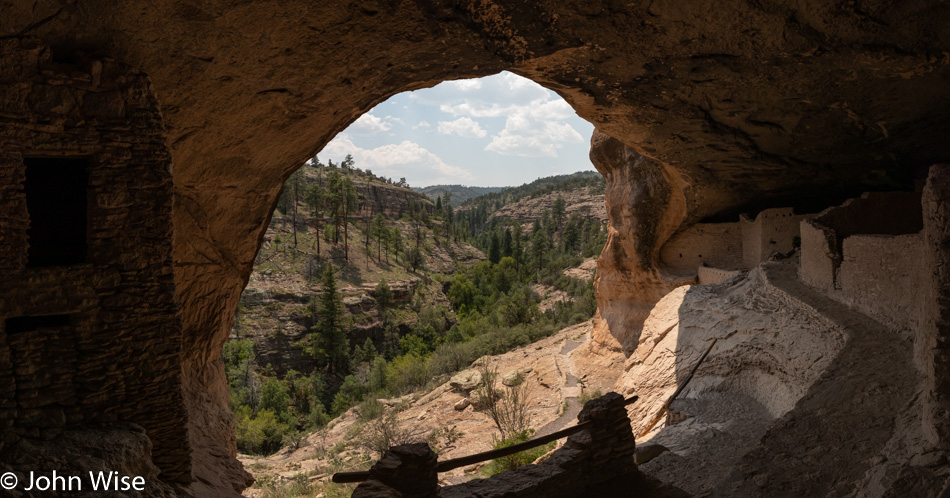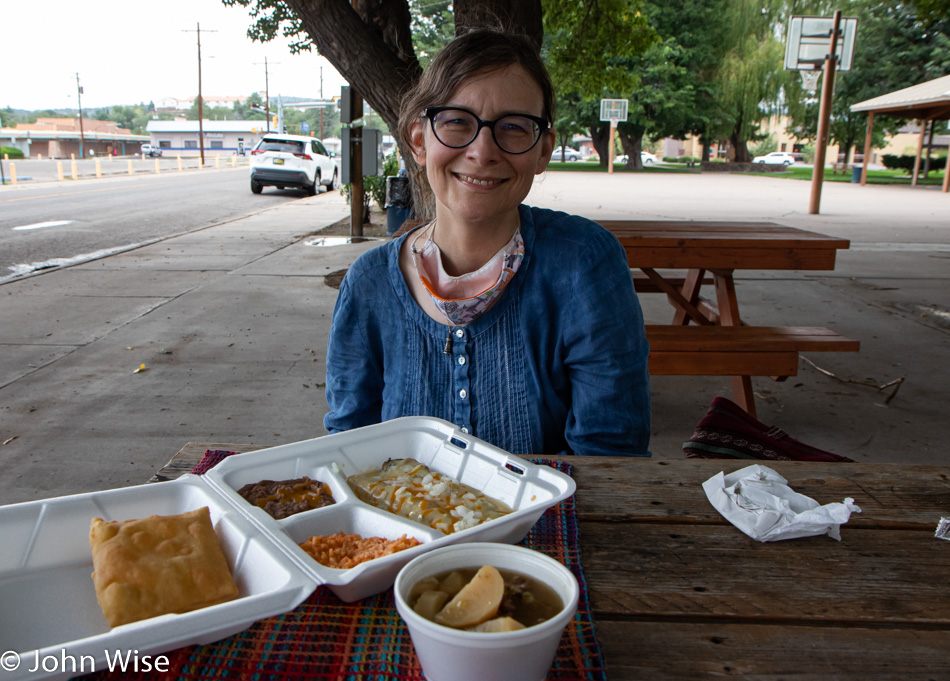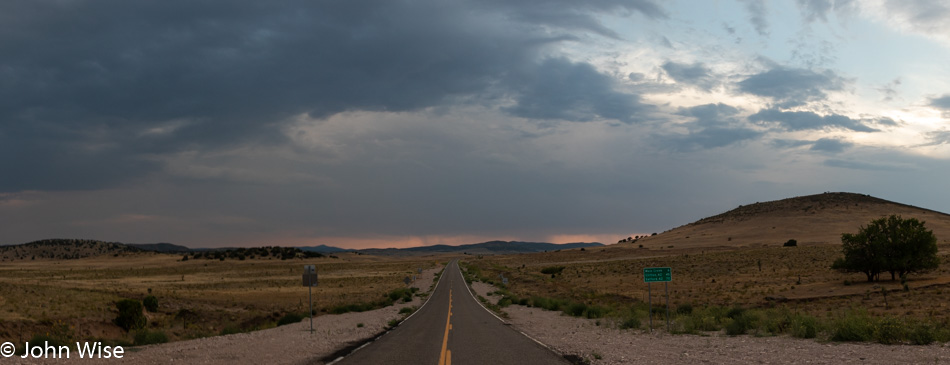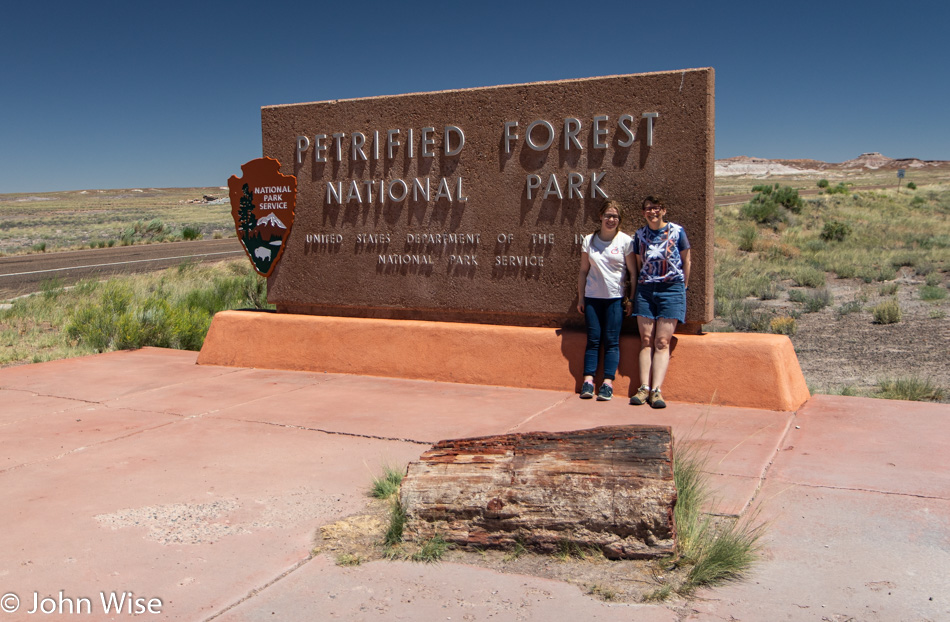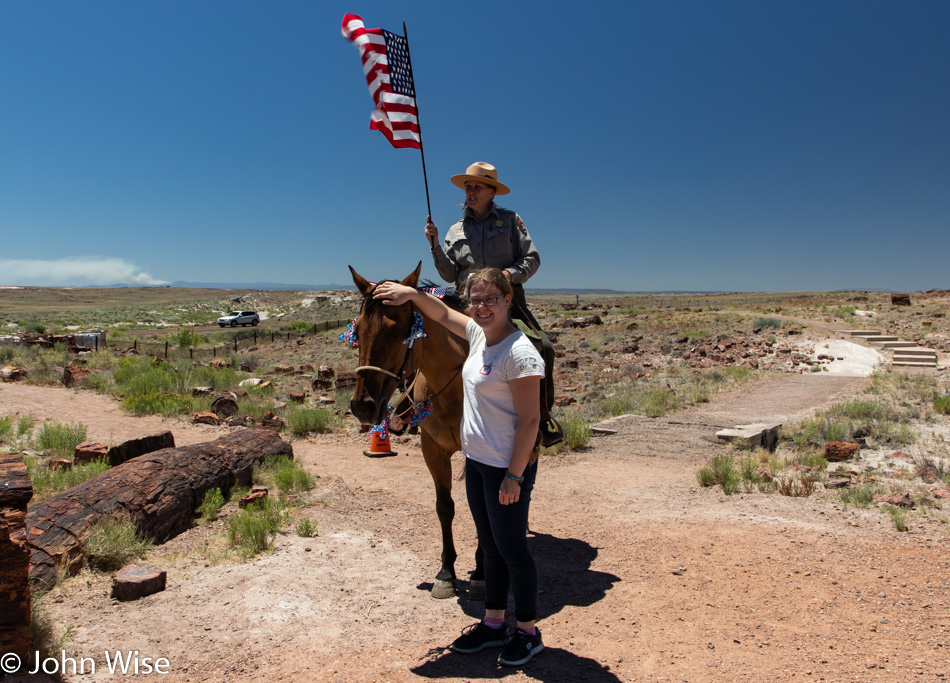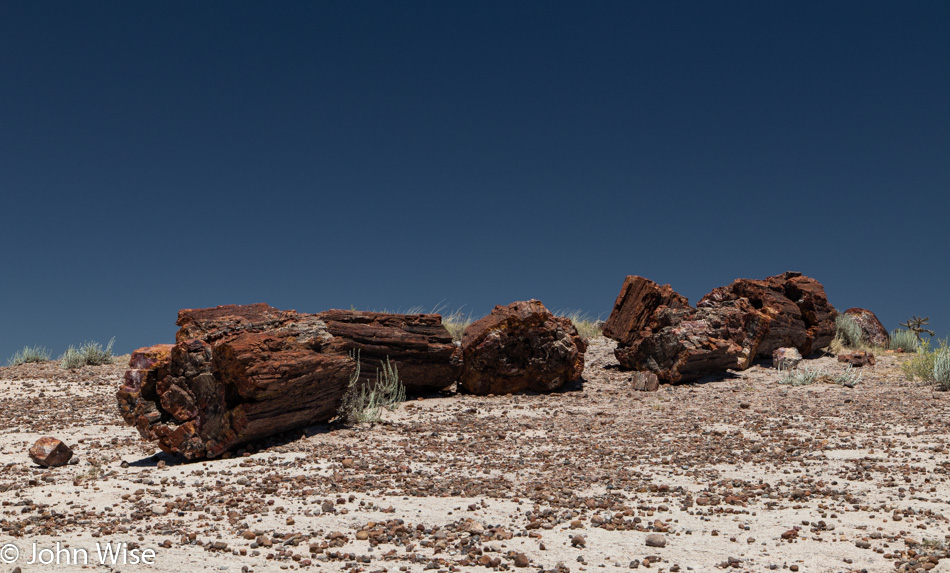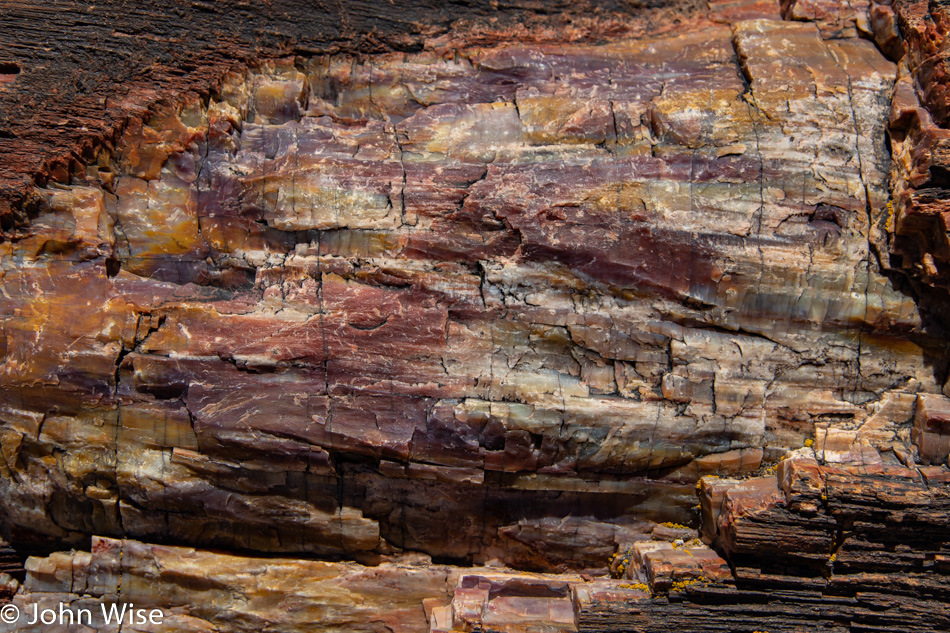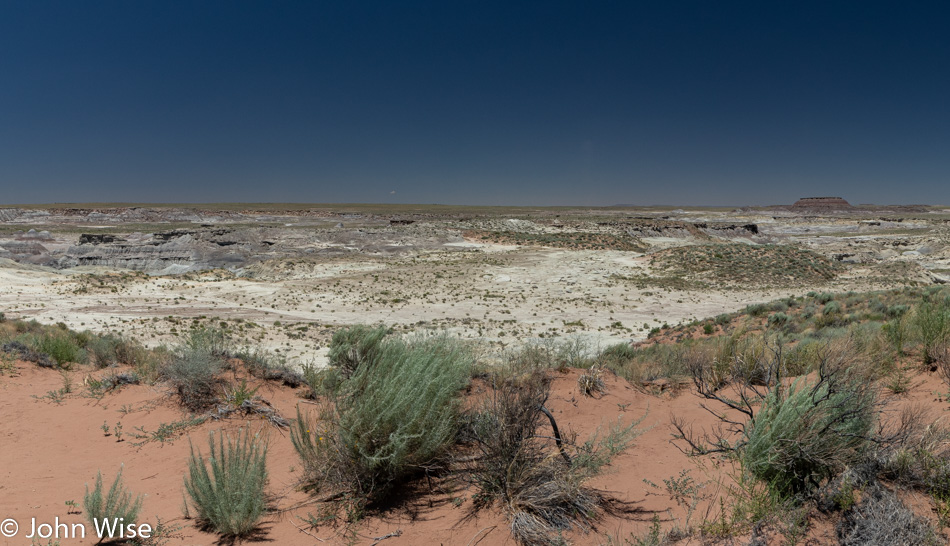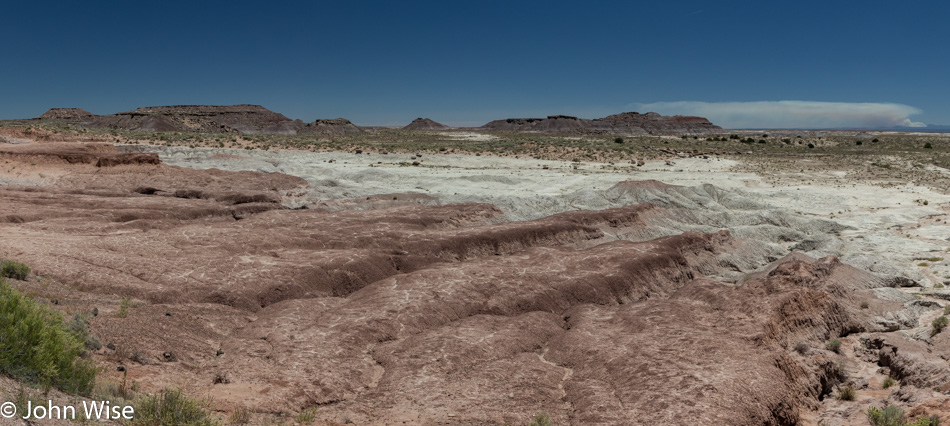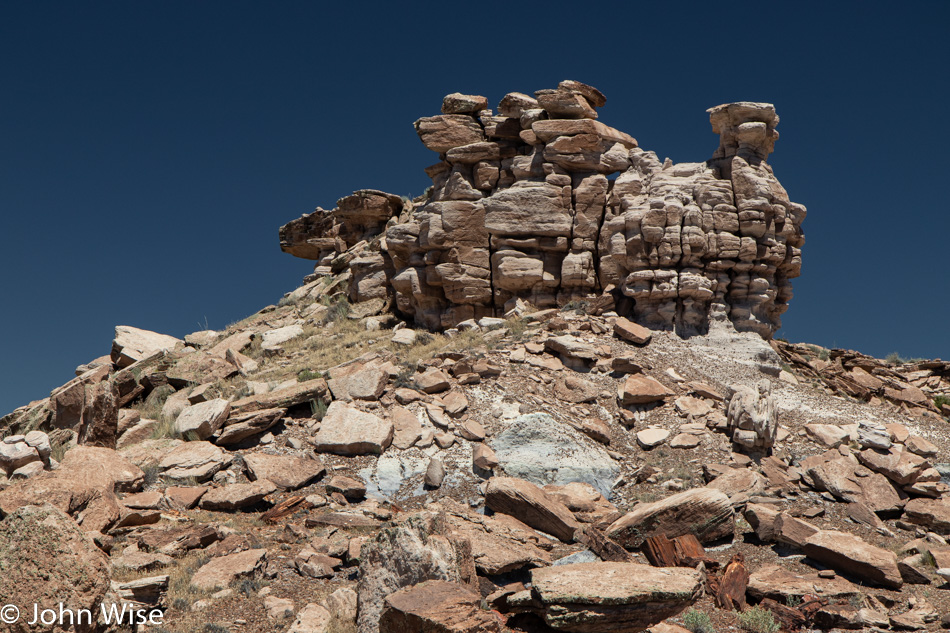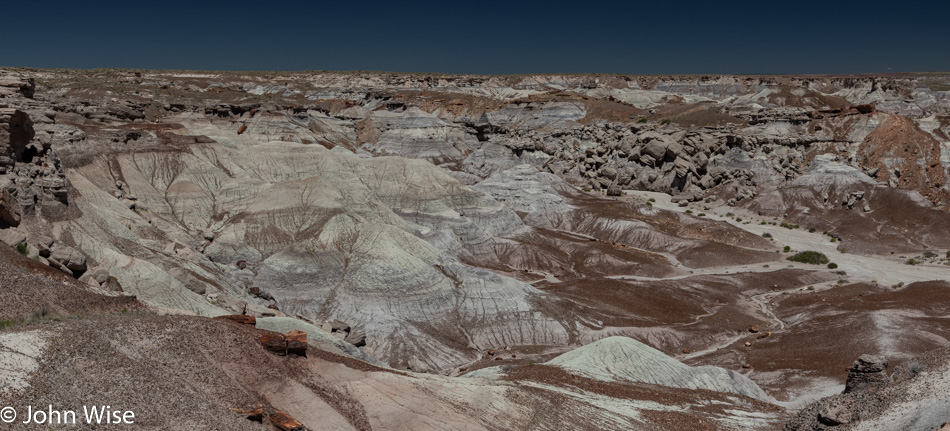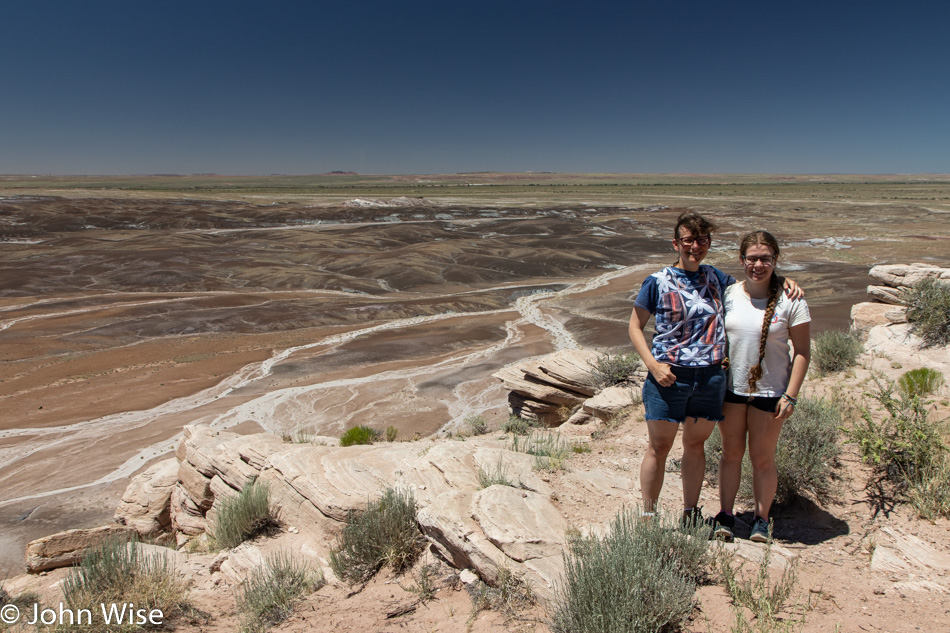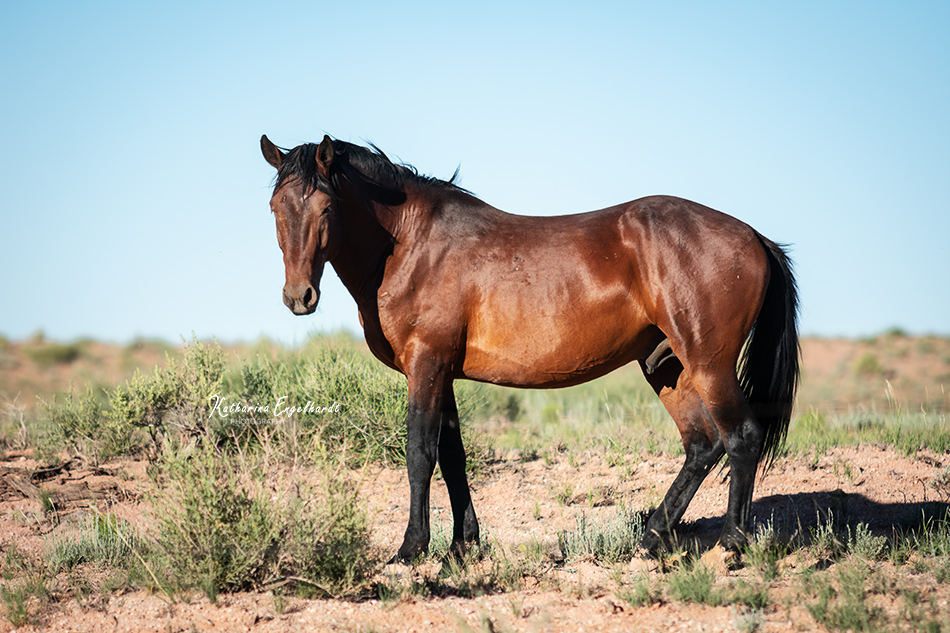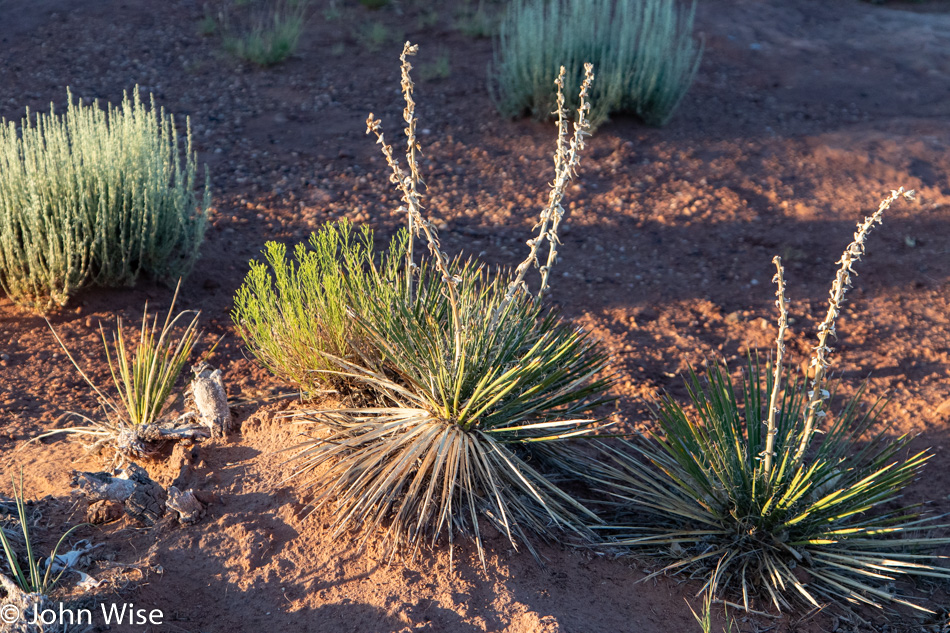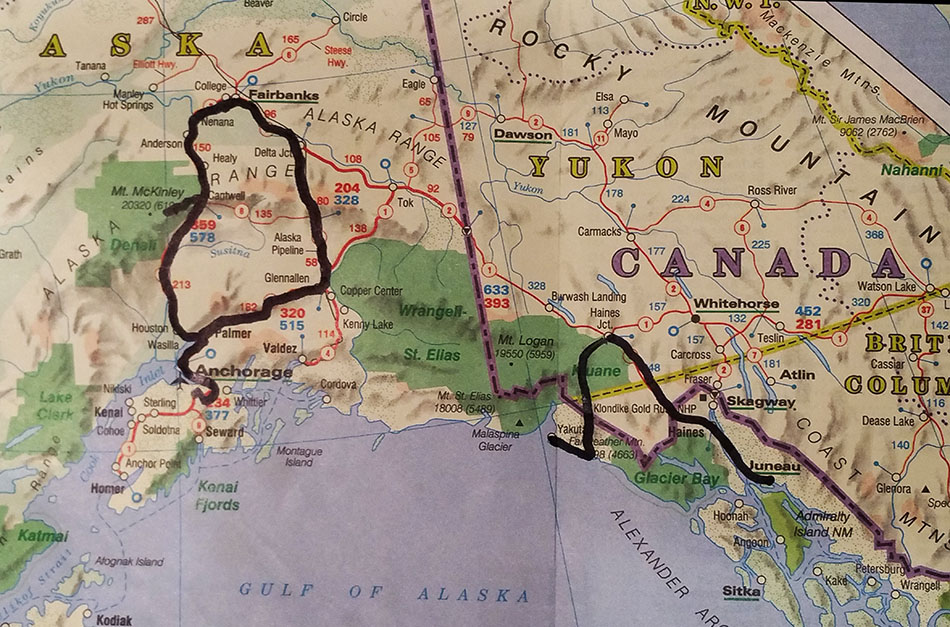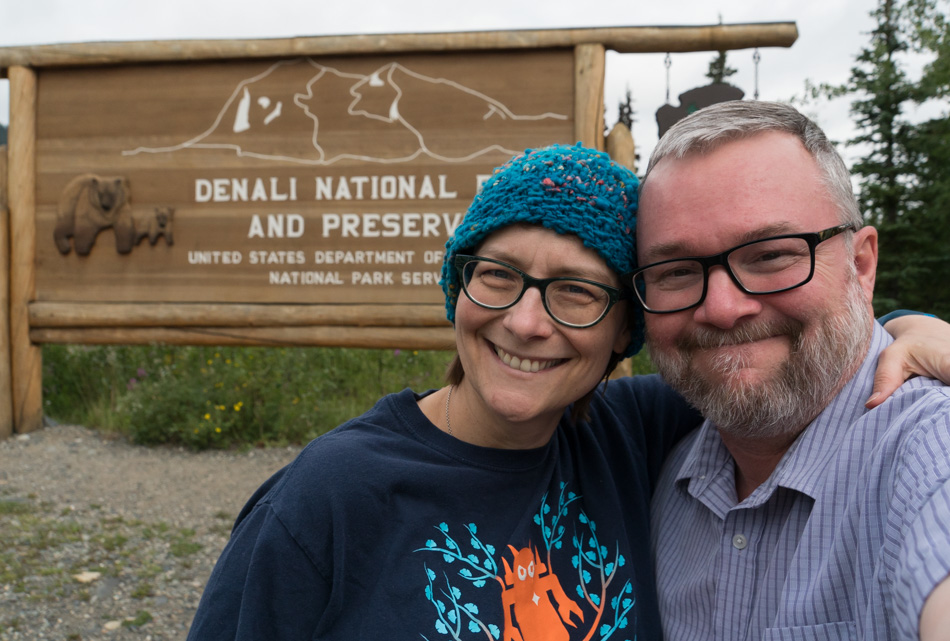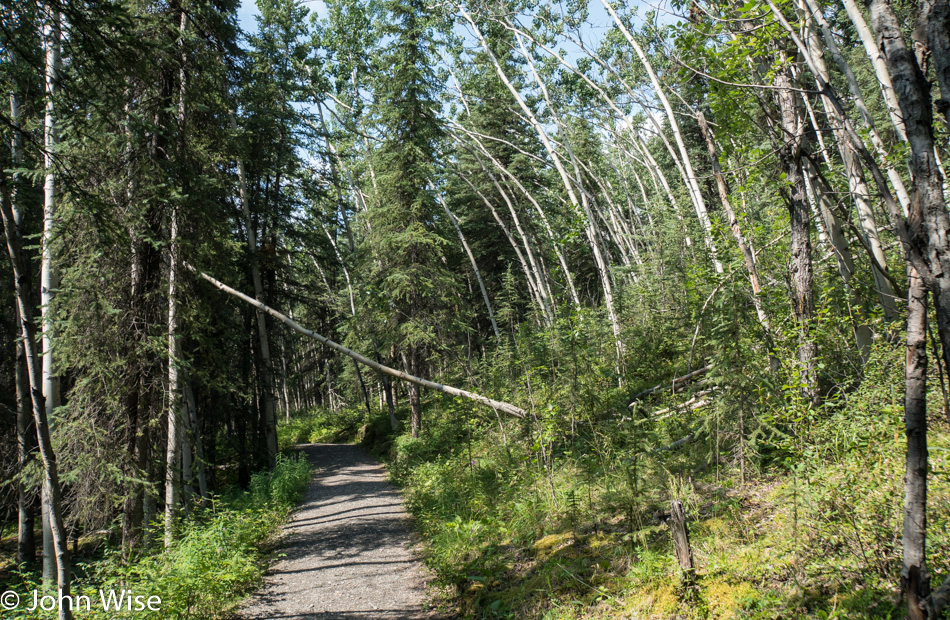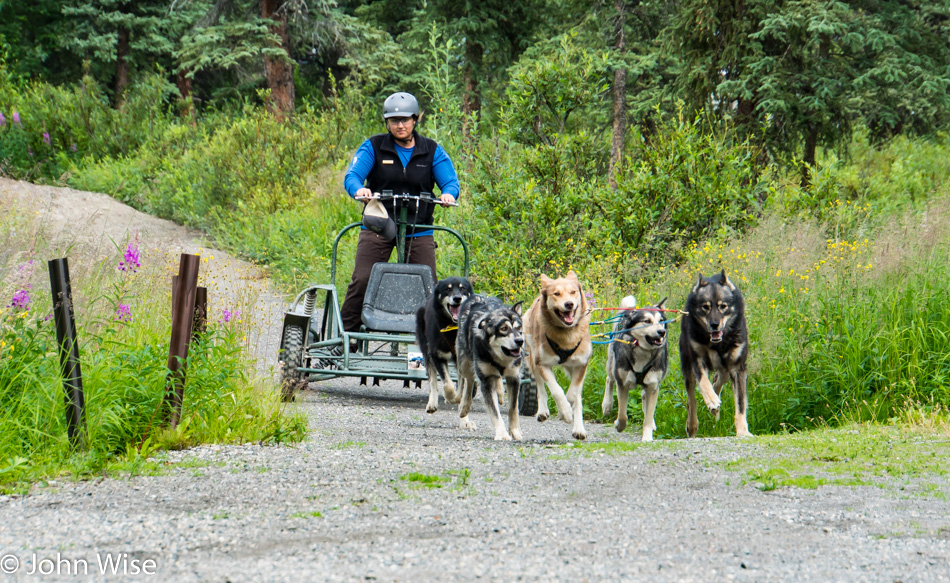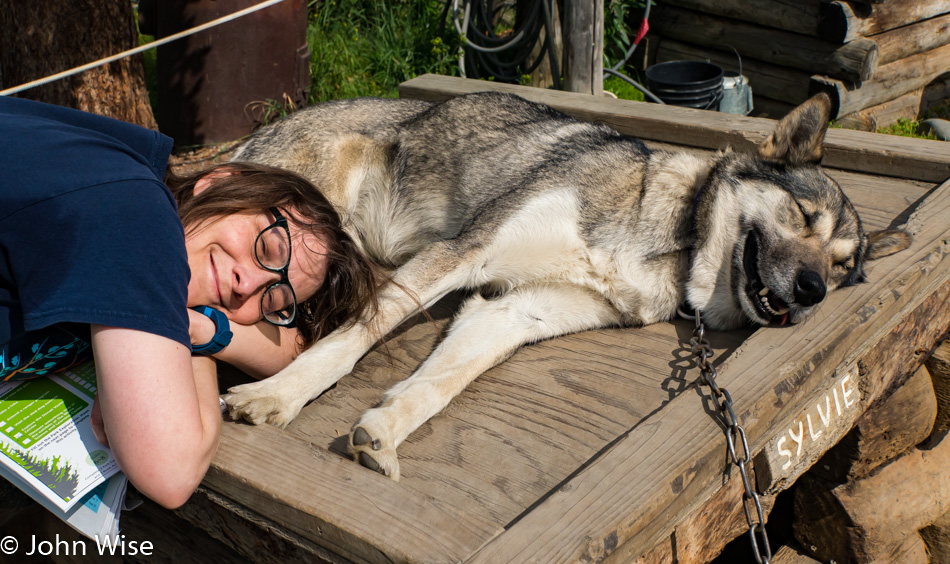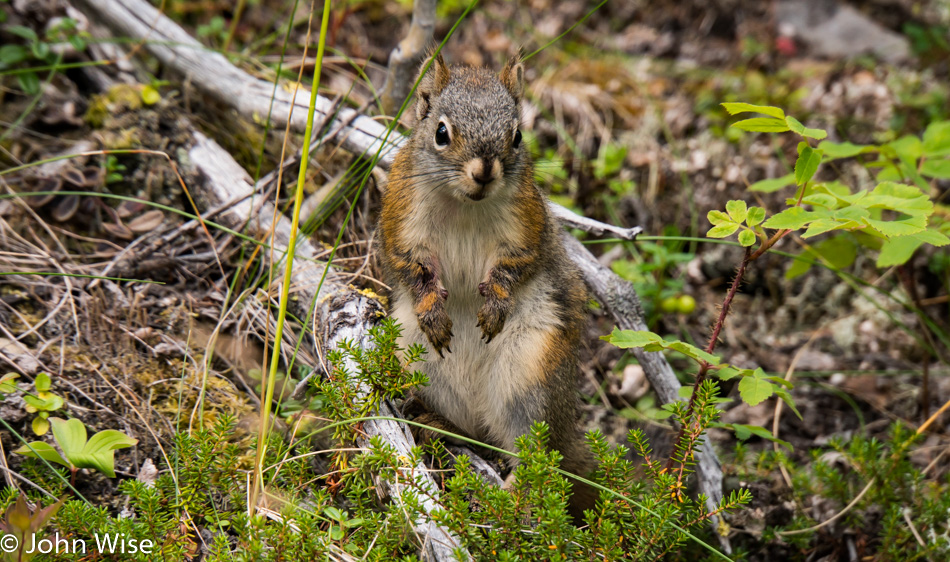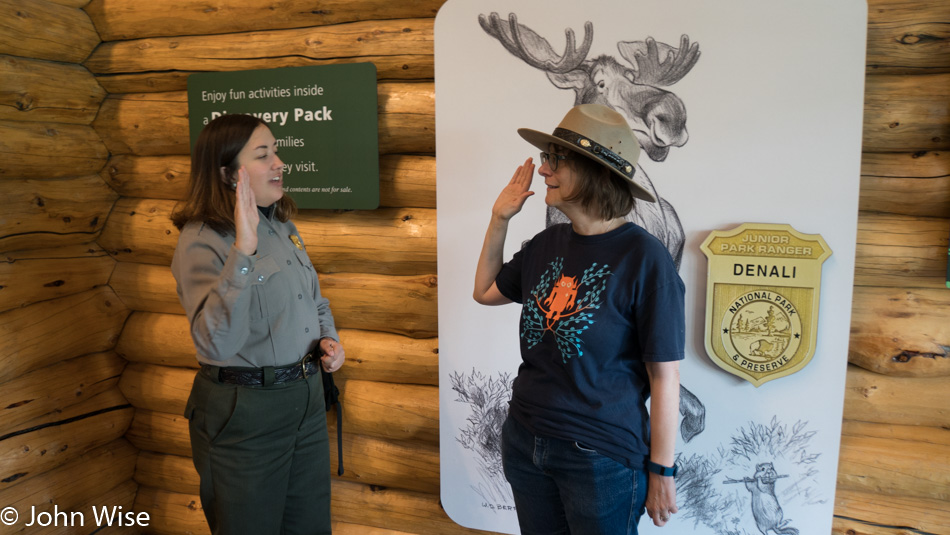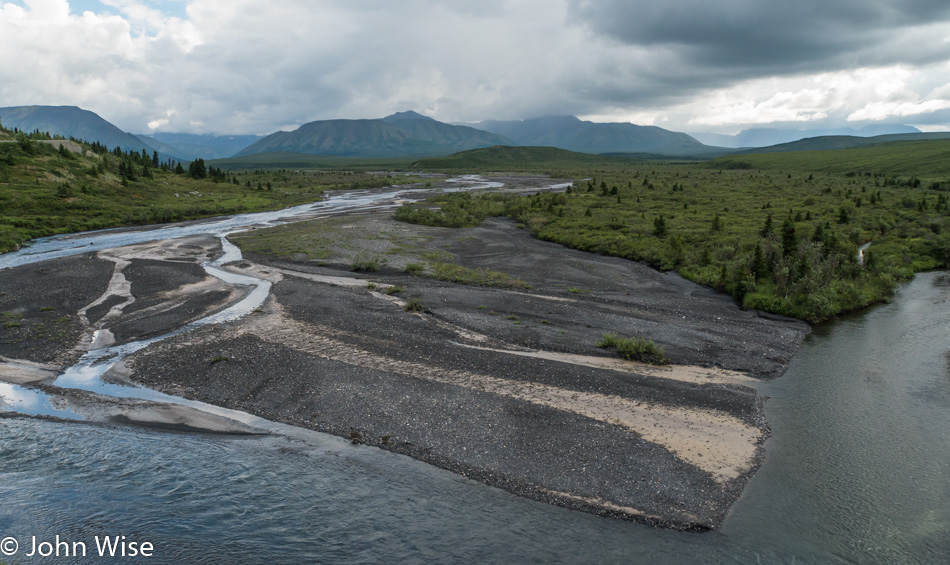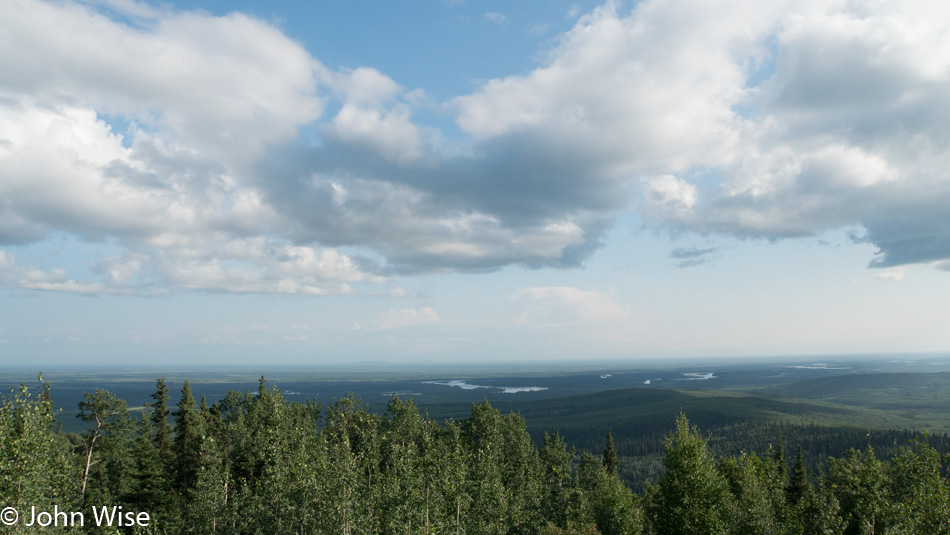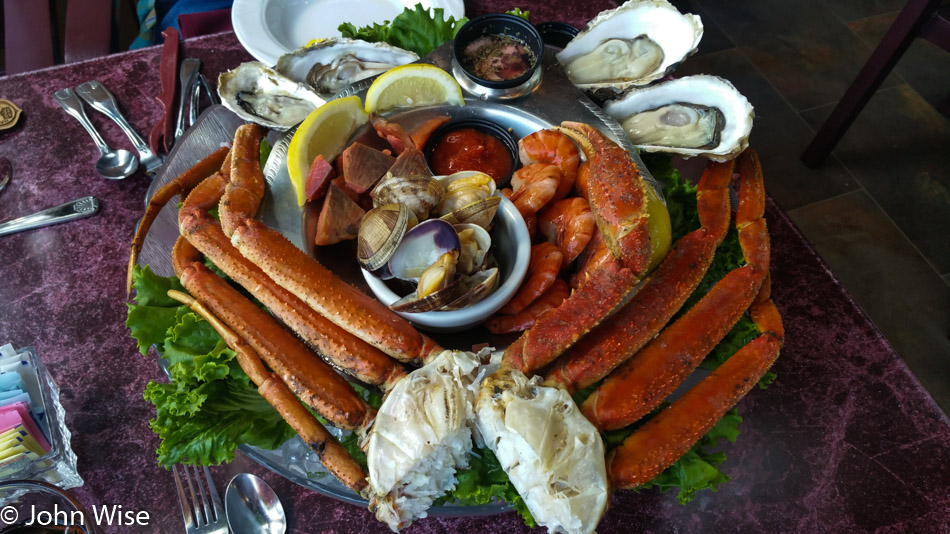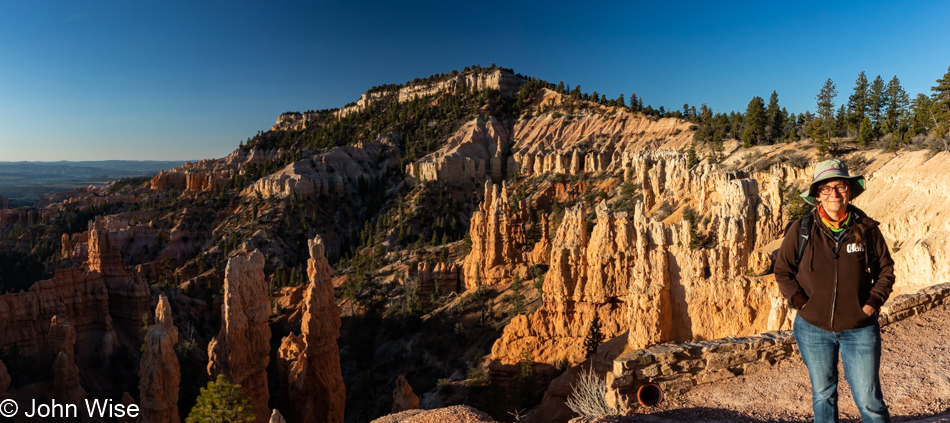
In the quiet cold of a crisp, clear morning alone near the trailhead of the Fairyland trail in Bryce National Park, we hear echoes of The Continental as he greets us with a hearty “Wowie-wow-wow-wow!” Oh, is that cowbell in the distance? Well, this beautiful sight doesn’t require more cowbell, though I suppose a little wouldn’t hurt either. Time to get Walken and make our way into our day on the trail.
Note – Caroline, upon reading the above just moments after I wrote it, wondered if we’ll remember the references when we are older. Hey Caroline, we are already old, and if we don’t know what this is pointing at, we probably have dementia or some other brain ailment. With that in mind, I’m including this link to the Saturday Night Live skit with Christopher Walken playing The Continental.

I closed Friday’s post, chronicling our drive north to be right here on this early Saturday morning, by writing about the role of love in these adventures. That was how I had planned to start today’s post, too, but being goofy was part of the beginning of this day as well, so that is that. Finding profundity even in the shadow of these photographic reminders is not always easy, though, in the back of my mind, I always hope to find some exalted eloquence to bring Caroline and me back to the sense of grandeur we were experiencing on these days out in the American wilderness.

Awe is a well-worn word that likely shows up on half of all of our travel posts. I should probably mix it up and occasionally write of our veneration or admiration, but awe comes closest to gob-smacked without sounding so heavy-handed and cliched, so I’ll stick with awe. Now join me in looking in awe upon the hoodoos of our wildest imagination because this is no CG rendering of a fantasy landscape; it is the reality of the Fairyland Trail.
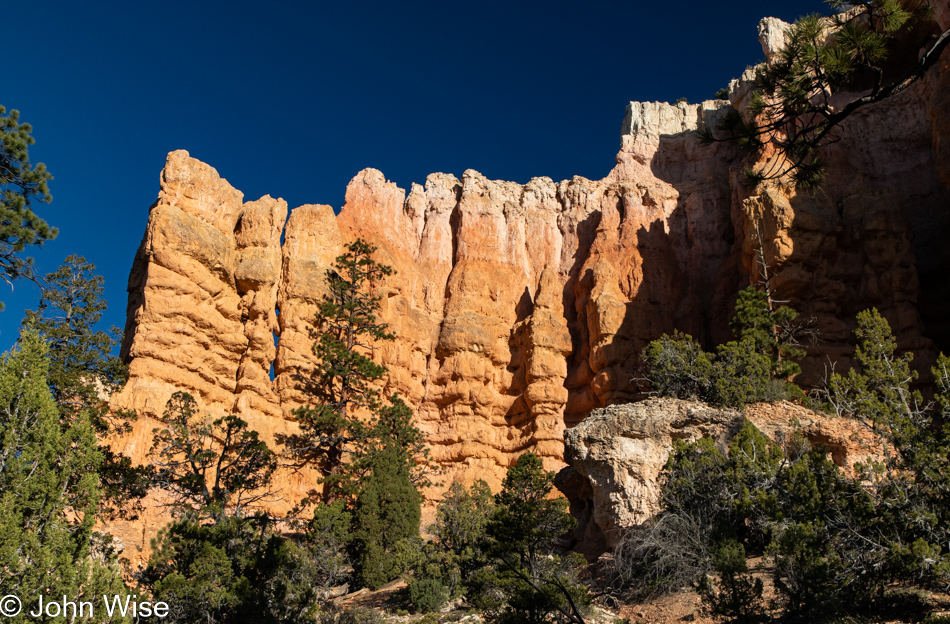
In the run-up to this visit to Bryce, I was looking for trails we’d not traversed previously, and that are of a particular length so we could spend the majority of our day out in the middle of things. Having been here before, I considered that there is the rim, it goes down to the basin, and along the way, we marvel at the hoodoos. As I’ve mentioned these “hoodoo” things a couple of times already, I should share just what they are. According to Wikipedia, “A hoodoo is a tall, thin spire of rock, usually formed by erosional processes. Hoodoos typically consist of relatively soft rock topped by harder, less easily eroded stone that protects each column from the elements. They generally form within sedimentary rock and volcanic rock formations.”
What we are learning on this trail that I missed doing my research is that there is exposure here. I have acrophobia, or extreme fear of heights, and that’s what I had to deal with very early on the trail. I can only hope we don’t encounter more of that nonsense. At this point in our hike, we didn’t yet know that the trail was also rated as strenuous, but we’ll fully recognize that during the last few agonizing miles. Being up here at around 8,000 feet of elevation might also contribute to the extra exertion our hike requires.
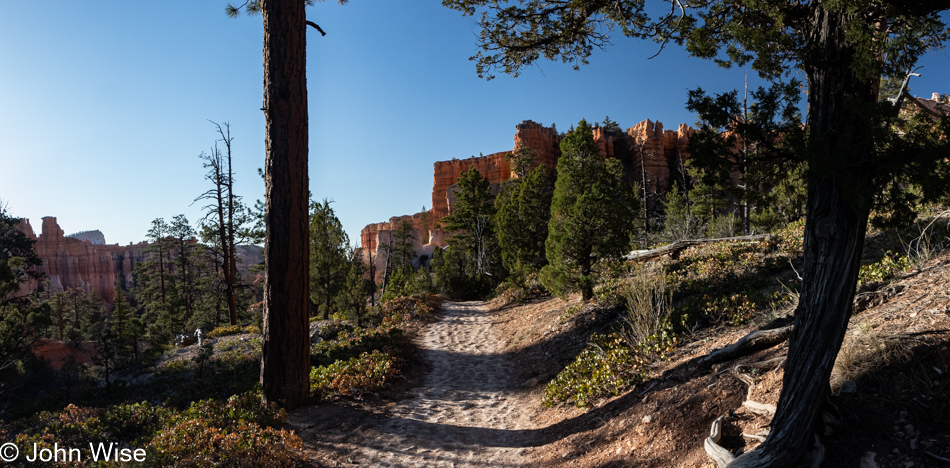
Like the imperceptible speed of erosion, Caroline and I move along like glaciers scraping over the earth in such a way that only time is allowed to witness our movement. In our mastery of ninja-snail skills, we require millennia to make progress down the path. This is a quality we are constantly refining so we might graduate to spending many millennia or maybe someday a myriad to move from here to there. And what do we see while lingering on the trail into our world? The understanding that reality is different than desire. We wish to observe a molecule of growth emerge from a filament of lichen, to watch a photon be absorbed by the leaf as it uses the sun’s energy to convert carbon dioxide and water into sugar, to be present in the mind of the bird as its instinct to fly is first relayed from its brain to its wing. Those are desires, wishes, dreams, and flights of fantasy that, under the circumstances of being on a hike, are all equally impossible to realize. Instead, reality dictates that we are only allowed to absorb but a fraction of the infinity flowing into our eyes, and so we go slow, hoping that more of more remains in memories that seem to be tossed off all too easily following these encounters with the amazing.

Now, look back to where you’ve been. Was this there before, or has it been altered by a shift in perception? Why wasn’t our brain tuned to see it in all lights and angles? Is there a method of grading this in our minds that would allow a higher prioritization in the hierarchy of memories? How sad the tragedy that we have evolved to better recognize faces, even of those we might wish to forget; seriously, why do any of us carry the image of Hitler, Freddy Kruger, or even the mask of Darth Vader better than we can recall the image of things out of nature aside from the most iconic monuments? Just then, the answer jumps into my head: mountains, beaches, trees, and flowers rarely kill people; other people kill people, so knowing which faces are dangerous is a survival strategy.

Scroll back and then return here. Am I sharing a different aspect of something already seen, or is this a wholly new view? Had I written this in situ, I might be able to answer that question but it’s now a week later. It takes a good amount of time to parse 815 photos to find the 70ish or so that I’m posting, and so my brain, while not wiped clean, is looking at these images and wondering, is this something I’ve already shared? If I were to extend that thinking, I’d give up writing the words dropping in on this page, as where else have I shared these exact thoughts?
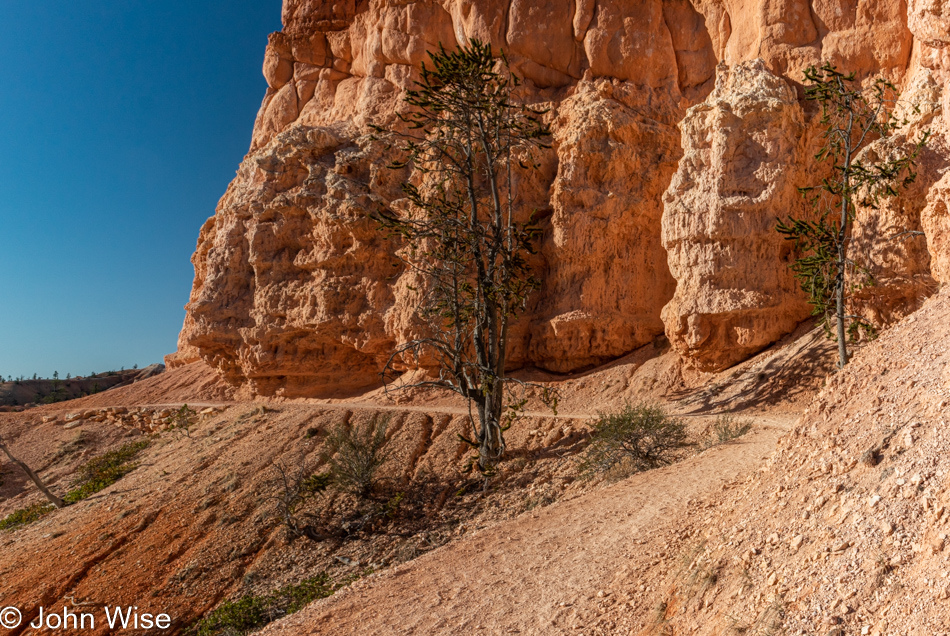
Trees struggle to hold on to the loose, ever-shifting earth; bushes cling low to the surface to establish a foothold lest strong winds send them off to other places, while rocks and sand continue to fall from above. Rain and snow work between the unseen spaces, ensuring there will always be less to see here than the time before, and there is nothing we can do to freeze this treasure in time, guaranteeing that anyone, even just tomorrow, will ever see Bryce Canyon in just the same way we have. An hour from now, our footsteps may disappear under the stride of someone else who passes through, a leaf might sprout, or a larger rock let’s go, and the path forward will be unpassable until those who care for these trails take it upon themselves to remedy the blockage so we can continue experiencing such sights.
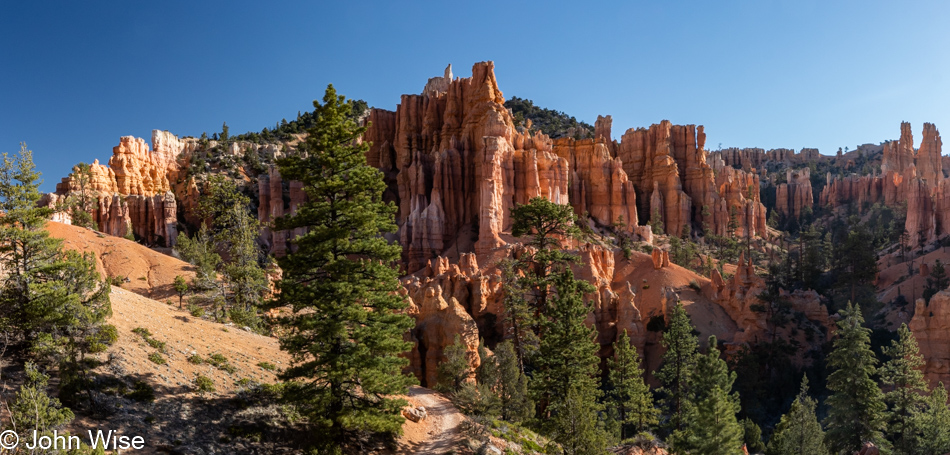
If Arvo Pärt were up for it, he’d be my first choice to compose the soundtrack for Bryce, next up Max Richter, and I suppose even Hans Zimmer might craft something appropriately elegant; instead, I’ll have to make do with the sound of the wind, birds, our steps in the sand, and the silence that emerges from between the hoodoos as although they may take on the visual characteristics of organ pipes, they do not bellow in lush tones though they appear as if they could serenade us with the most beautiful music.

Sure, we are looking at the camera, but we’re so well practiced with this act of taking selfies that we understand that we are looking at each other, searching for the mirror of each other’s happiness, and as days pass until we look once again at these faces captured during this moment, we’ll know full well that we are gazing at love. Those two faces were engineered by the hidden hand of the universe to know the matching snuggly places where things just fit and find reassurance that the feelings and scents belong together just as the nature and shape of the surface of the earth are perfectly matched to the atmosphere that embraces everything underneath it. In this sense, I am Caroline’s tree and earth, and she is my oxygen and universe.

Every word I share here should be part of a love letter, and the fact is, even in lament, I’m in love, if in no other sense than the potential that things don’t have to be the way they are when they fail. Our human systems might fail our fellow men and women, but on occasion, we execute things perfectly, such as when the initiative has been undertaken to carve a trail through a mess of chaos that allows us to scale places we’d otherwise not be able to tread. I have no idea who mapped this trail, who paid for it, or who toiled to reshape the earth, so however many years later, we’d be here on a perfect day taking a stroll through a national park among alien rock formations as though it were the most normal thing ever.

Consider this precariously balanced top-heavy spire just waiting until the day we arrived; for us, this could be the most normal thing ever because these forms are what shape this park, right? Wrong, this is not normal; this is treasure and experience beyond all monetary value as my mind nor my imagination is able to assign memories to the idea of money but intriguing beauty fits like a glove to deliver something akin to ecstasy.
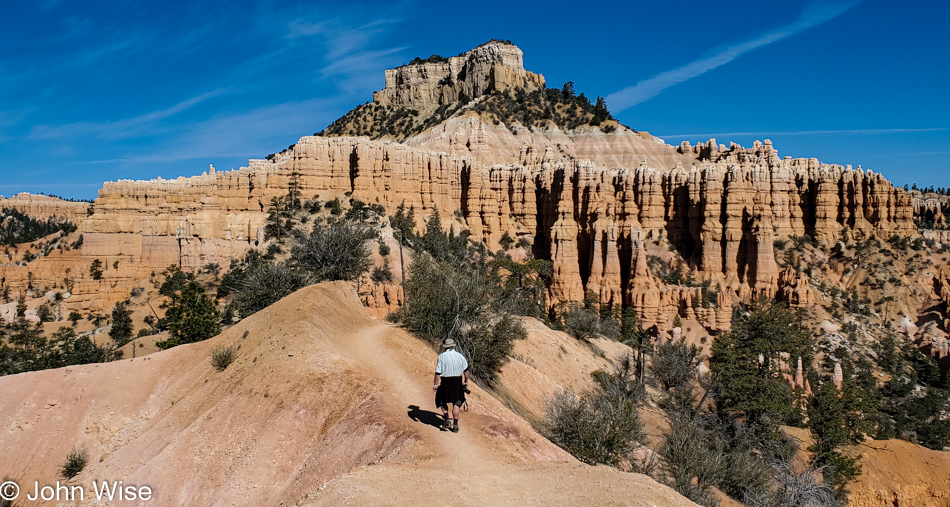
At the opposite end of ecstasy is terror, and that’s where I was standing before crossing this narrow razor’s edge of near-certain death. I gave two seconds of serious consideration to turning around, but back there at the trailhead was the first time I was launched into a bout of anxiety regarding my horror of hovering next to an abyss. Turning around would be defeat, though knee-buckling fear wrenched my stomach into a convulsion that initiated a conversation with my lower intestine, specifically my rectum, that pinched off in ways that drilled at my confidence. Before I can turn into a quivering wreck of adventure-canceling jello, I ask Caroline not to say a word of encouragement to me, don’t start after me before I reach the other side, just wait in silence.

I forgot to share with you that on the way to the park, the temperatures dipped as low as 25 degrees (-4c), though, at the trailhead, it had already warmed to a toasty 28 degrees (-2c). Add to this, I was wearing shorts because why would I need pants when we’d already seen temperatures in the upper 90s (35c’ish) down in Phoenix? Well, at least I had my long-sleeve wool shirt and a fleece, but by this time in our hike, we’d moved beyond needing a sweater, so I’d tied that around my waste. The gusty winds we were promised for Sunday were practicing for tomorrow’s performance, and while admittedly relatively light, they felt as though they would pick up at any second to whip over the ridge over which I’m about to struggle while wearing a sail around my waist. Oh, holy expletives, just go, John, and so I did, talking to myself out loud to remind my feet to find the trail with a tunnel vision that should blind me to the monsters from below trying to draw me into the void.
My atheist inner voice started talking to me after I turned around to watch Caroline cross, pleading with my non-existent god not to allow another inch of exposure to encroach on my well-being. Begging didn’t help as there was more to come, but nothing as precarious as this fine line dividing life and death.
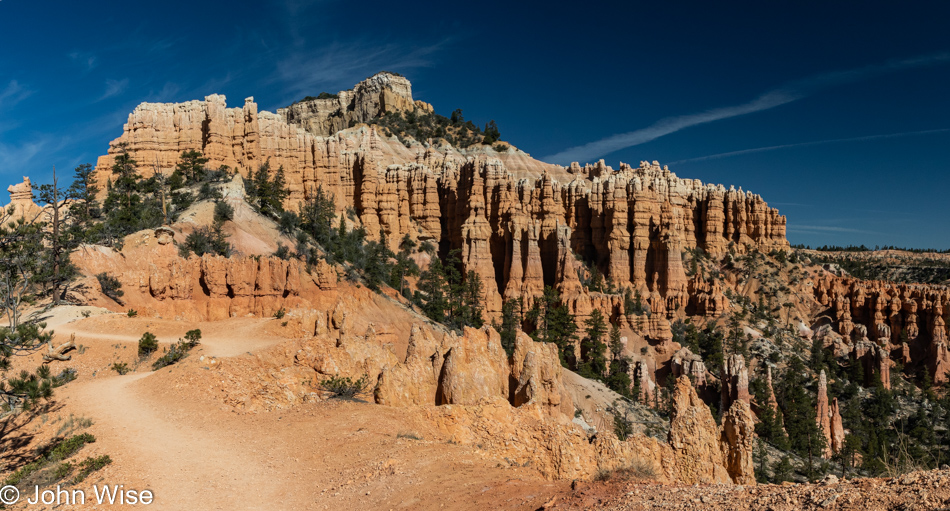
Writing about my fear sure was a lot easier than living through the moment, but these unfolding views demanded I continue, that and my pride that I should accomplish our 8-mile hike we would turn into a 10-mile journey. How the extra 4400 steps were clocked is lost in mystery.
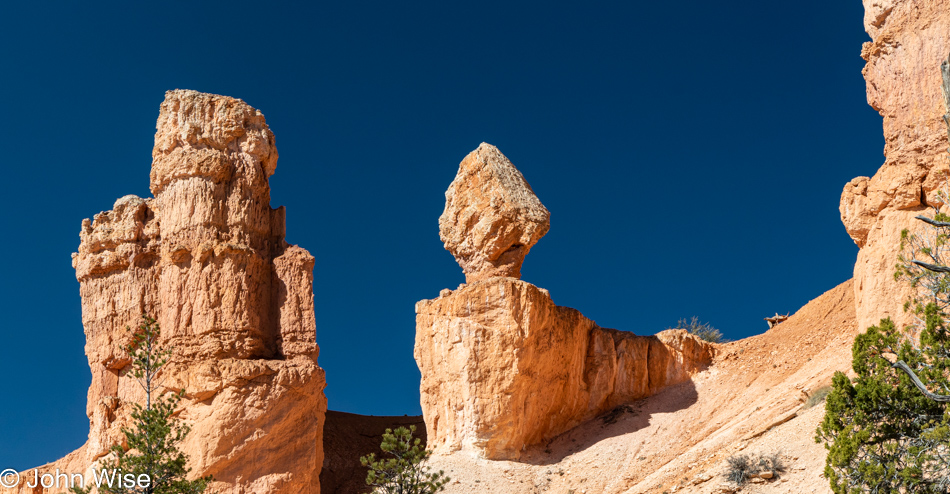
Yeah, it looks just like that thing we won’t mention here.
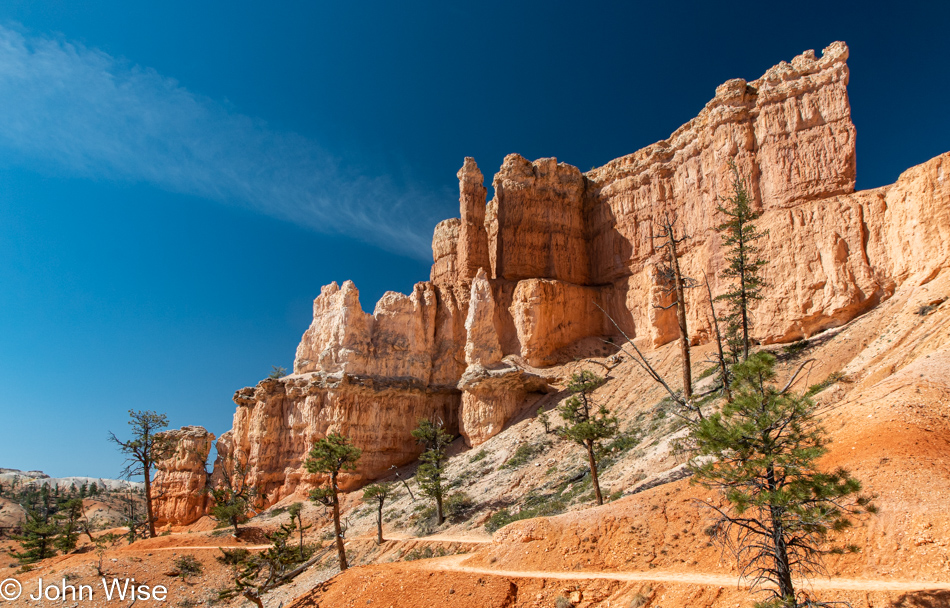
Here, in my parallel universe, exactly one week after we were hiking these trails, I’m immersed all over again in Bryce Canyon, except now I have the luxury of channeling all of my attention towards interpreting the experience. I’ve been writing since 7:30 in the morning; it is now 5:00 in the afternoon, and I’m not yet halfway through my task. When I call this opportunity a luxury, I’m not exaggerating, as how many people have the wherewithal to sit down with their thoughts, recollections, and inspiration before trying to bring back those impressions to feed my wife’s and my memories while possibly inspiring someone else to dream of visiting some of the places we’ve gone? What a gift that rises to equal the very act of traveling, including this travel within myself a week later.
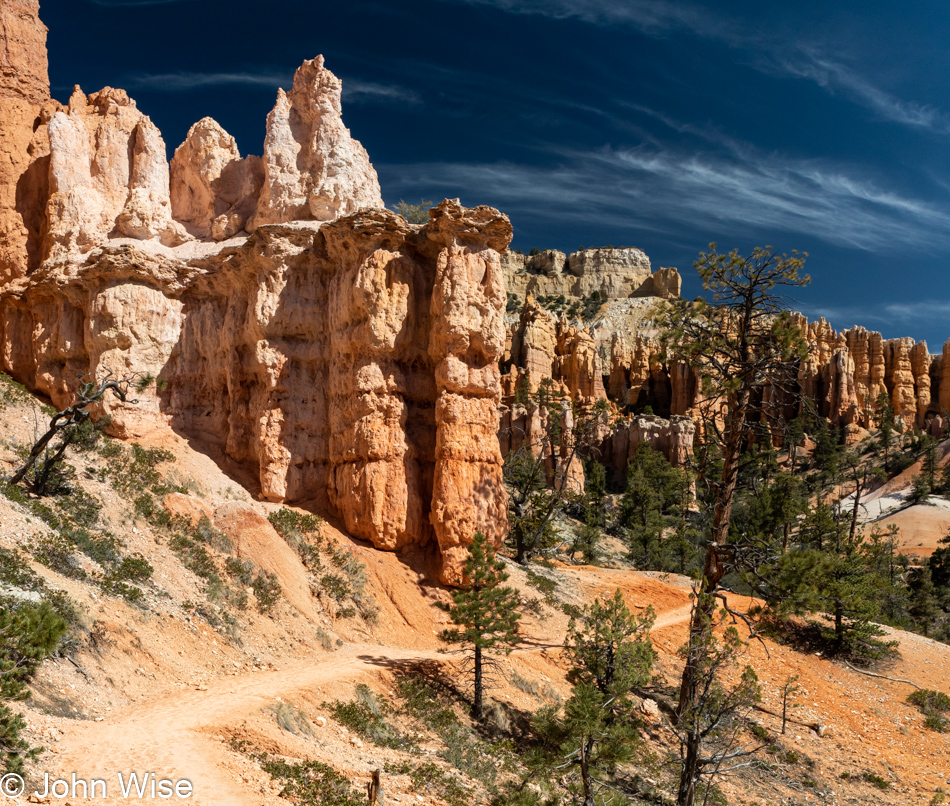
Like the trail, like the day, like our love, I just keep going forward, searching for whatever surprises might be around the corner.

The Fairyland Trail could easily be renamed the Fairytale Trail and live up to that new name. If one arrives equipped with an adequate supply of imagination in their mental backpack, they will quickly consider that this basin is not only host to the potential of fairies but is a place where a narrative of enchantment can unfold into a fantastical story that will travel with them the rest of their lives.

Should you doubt my claim above or fail to find the magic of astonishment in environments that plant the mythical seeds of the profound within us, maybe you will be fortunate enough to be visited by a creature sent to whisper the secrets of how to peer into unseen universes and embrace the impossible. Maybe part of the key to these moments is to exude such an extraordinary amount of love that creatures, trees, the sky, and mountains become aware of your presence and open the window to that hidden dimension.
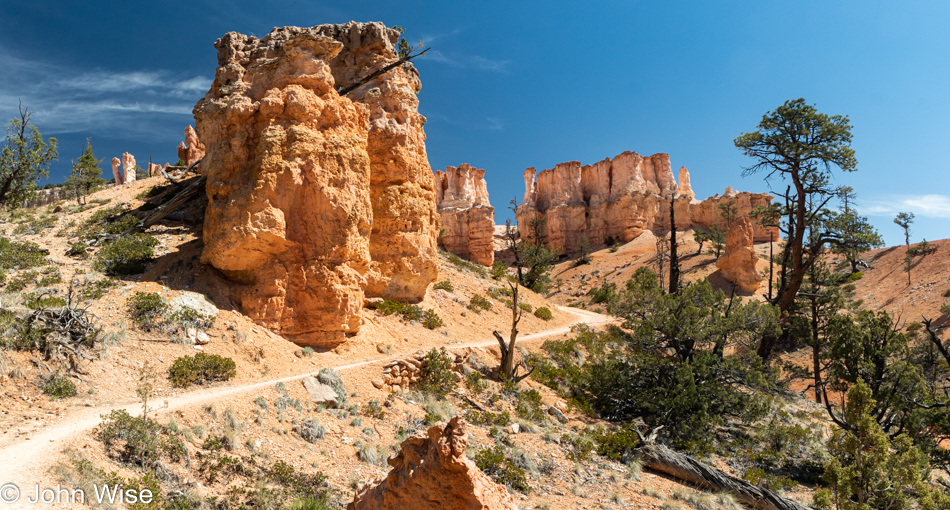
But what if that dimension is not hidden at all but simply unknowable to those without the vocabulary and love to embrace potential and opportunities? Could the inability to give sense to the unfathomably profound be part of the reason there are so few people out here? Maybe the peeking in from the rim of the canyon both here at Bryce and down south at the Grand Canyon is all that fragile, inexperienced minds are able to tolerate as they make baby steps into exploring the depths of places too overwhelming during their first encounters?
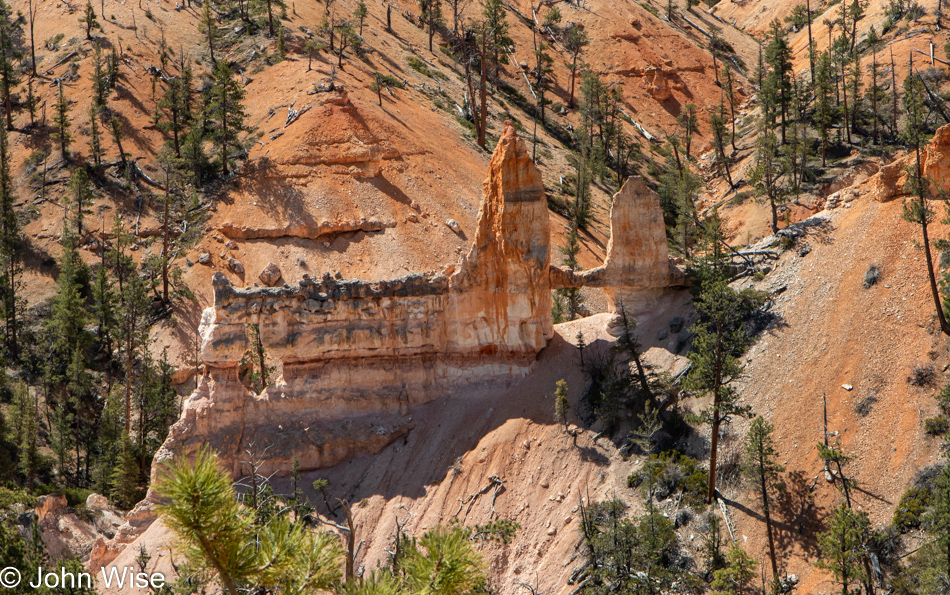
We gain a footing in the mysteries of our world as we bridge the way forward, crossing over the fears that travel with us. I’d like to suggest that those fears are actually tools that propel our uncertainty and challenge us to work harder at overcoming them if we are to continue growing. On the other hand, there will always be those afraid to step over the shadows of the unknown while sadly spending lifetimes insulating themselves from exploring the breadth of potential happiness. I believe that confidence and, subsequently, happiness arrive with conquering the irrational, the fear, and the thoughts that we might only learn a mere fraction of things from the vastness of potential knowledge and experience. For example, overcoming the terror I experienced walking next to the ledge gives me the reward of being on the other side of that anxiety. On this other side, I find a new world I was reluctant to step into, but I am now able to discover the ecstatic joy of new things so beautiful that they defy easy description.

If I were a poet, I could focus my writing on trying to send aloft these images with a descriptive narrative allowing the blind to understand what was captured and what it is that is elevating my aesthetic sense of inspiration. Even with my creativity crippled, I’m driven to continue trying to unravel a flow of experience on these pages. But I’m sadly aware that I’m lost in a linguistic poverty that continuously fails in the conveyance of the magnitude of emotion I float through when my best friend and I are under the spell of such moments.
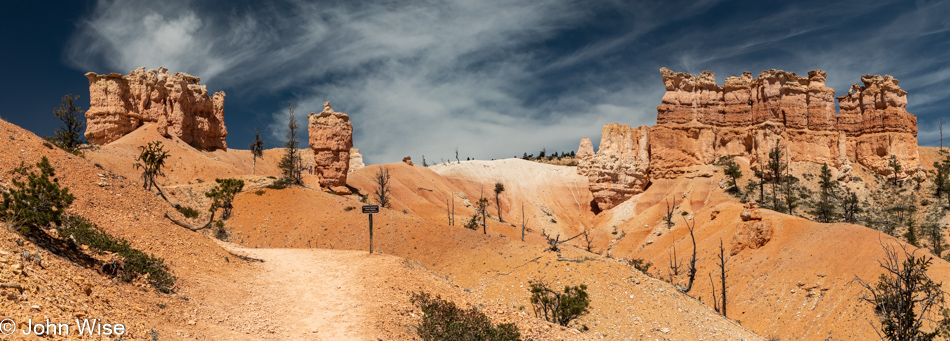
And so I just continue to write, searching for what’s out there. In the same vein, I hope that as I discover sights new to me, I might find a new sequence of words in my writing that will transform my brain allowing me the expression I’m looking for. Without constant practice, I’ll certainly end all possibility of obtaining that revelation. Oh, is that it over on the right? Probably not; I better keep foraging both in nature and in the expanse of a mind not afraid to fail.

I have to laugh out loud as I scrolled down to this photo and thought, “This is my brain, an expanse of clouded blue and a barren landscape with just three words barely clinging to life I must choose from what will reveal intrinsic values that transcend my mortality.”
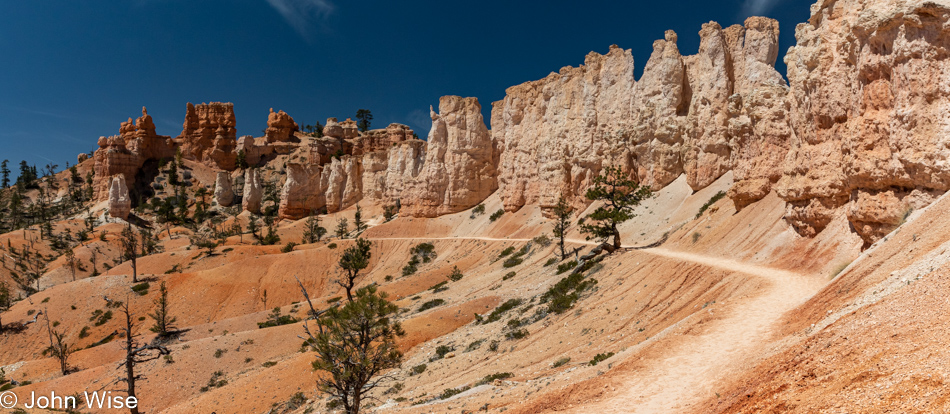
The trail has started its ascent towards the rim with the end of the heavy lifting in sight. After having been out here for hours there’s a bittersweet sense that our time among the hoodoos is coming to an end.

Are you thinking what I am? These formations surely do look a lot like candy nut clusters made of some sort of milk chocolate nougat.
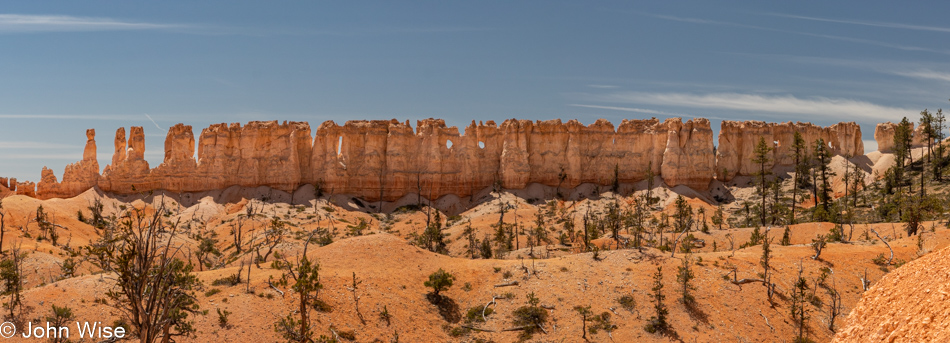
By this point on the trail, I’m tired. This is the Chinese Wall as it’s known out there, and that’s about all I have to say about it. Regarding this sense of being tired, this is the second day of writing this post, and it’s already late in the afternoon as I try to finish. Rightfully so, too, as I’m approaching nearly 3,000 words that I’ve shared here.

Hallelujah, we are reaching level ground soon when we meet the Rim Trail for the walk back to the Fairyland Trailhead. Not long after this, we reached the elevation of nirvana and were savoring the ease we’d be traveling the next hour or so; we could see cars in the Sunrise Point parking lot and proper toilet facilities. Phew, easy going from here forward.

WTF, we are climbing? Those thoughts that the last miles would be a stroll in the park were misguided. I should have done better research regarding our hike today. Not only did we discover a couple of extra miles out here, but we were also contending with 4,619 feet of elevation change (1,408 meters), and of course, those pesky drop-offs and facts such as the trail being rated as strenuous, so why should the end of it treat us nicely?
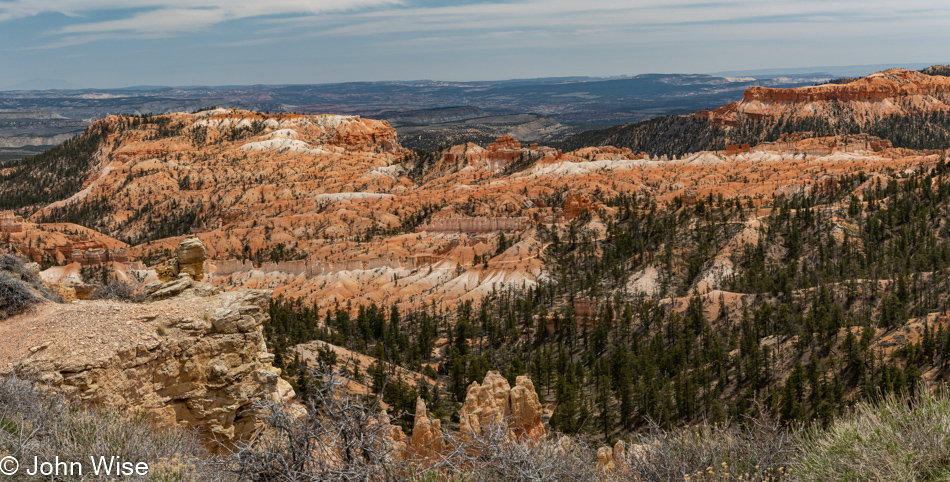
Well, at least there’s this brilliant overlook where we can gain a different perspective of the Chinese Wall near the dead center of this photo.
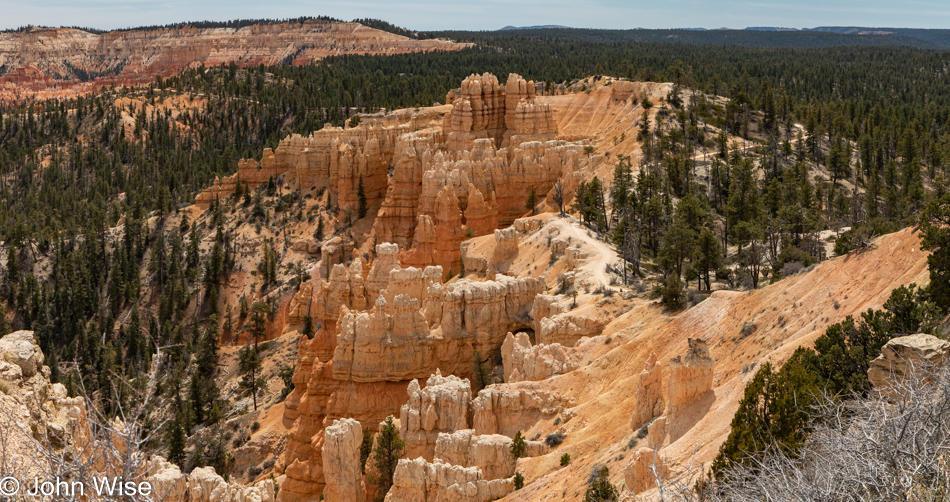
We’re finally at the high point of our hike, and the view around us is spectacular. If I share the other directions surrounding us, I’d only pile on more writing obligations and all I want to do is both finish the hike and this hunt for something else, anything else I can share here that will pull you into our experience.
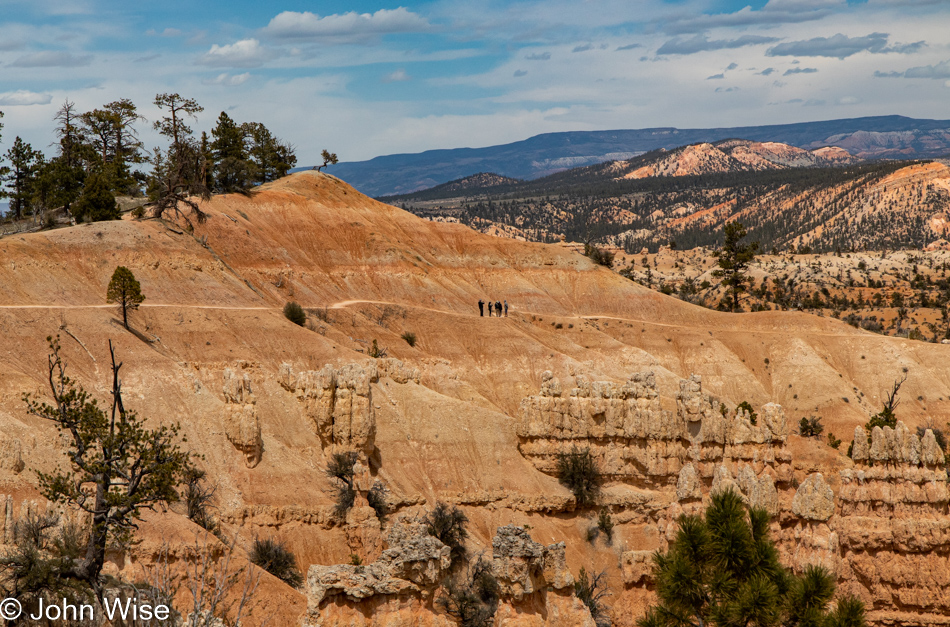
This must be it, the end, as that’s the beginning. Right out there, where the five lunatics are standing calmly at the edge. Just to the left is the trailhead where I first clenched at the thought of crossing that narrow strip of trail sliced into this 60 to 70-degree slope, as judged by my puckering backside. Lucky for me and for Caroline, as I don’t think she would have hiked this alone, there was nobody out there at 7:00 this morning that I had to pass because I wouldn’t have been able to. But now we are just minutes from our car, air-conditioning, a giant bag of popcorn from Costco, and rest for our weary, aching joints.
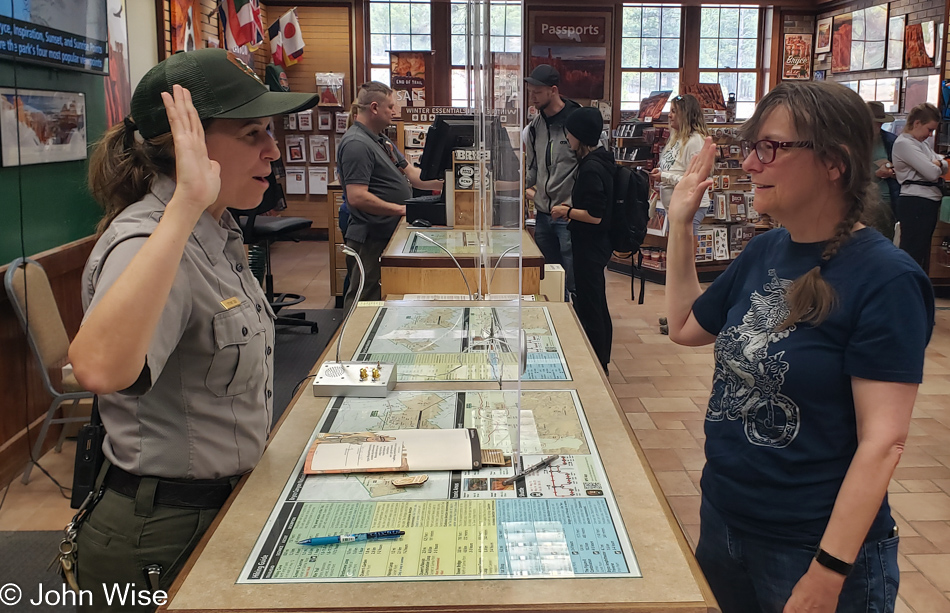
Seeing how it was still early, we jumped over to the visitor center for Caroline to collect a Junior Ranger workbook in order to earn her ranger badge, the real reason we visit any national park or monument. As for me, I found a chair and did nothing, enjoying the fact that my wife had to answer every question and do every exercise because she’s not a kid; adults must suffer to earn these kinds of rewards.
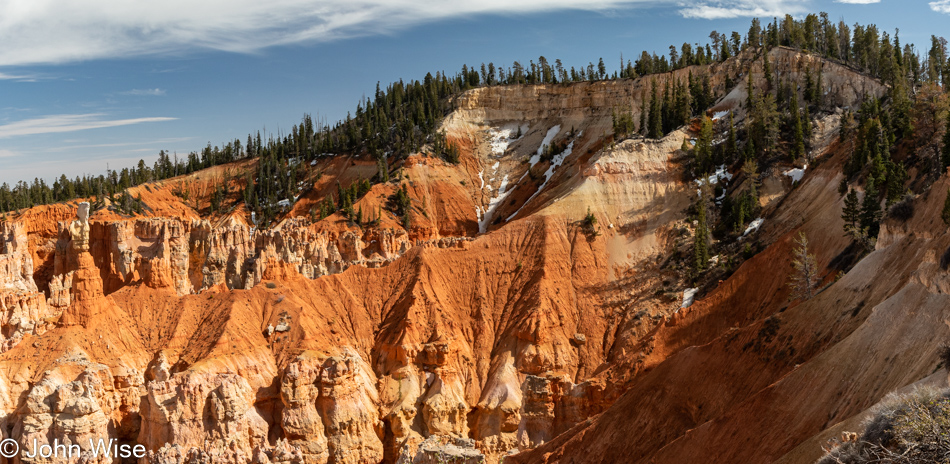
Hmmm, it was still early, and although we were exhausted, we weren’t ready to find dinner or go crash at the hotel. We’ll go for a drive down to Rainbow Point. We didn’t get far before we pulled over at the Aqua Canyon Overlook to get a good look at the snow that’s still lingering in the park.

Where is MY FOOD, you meaningless, empty-handed land animals? My freshly minted Junior Ranger wife swore to uphold the rules and regulations of the national park, and that means not feeding this bird…like she “accidentally” might have done with that beautiful blue and black Steller’s jay pictured in so many photos above.

We are in no hurry to leave the view of Agua Canyon as that would mean working our legs back to the car and stepping off that crazy steep curb we parked in front of. So it was a normal curb, but our joints were screaming at us with an angrier voice than any raven might as they complained about any step that went downhill.
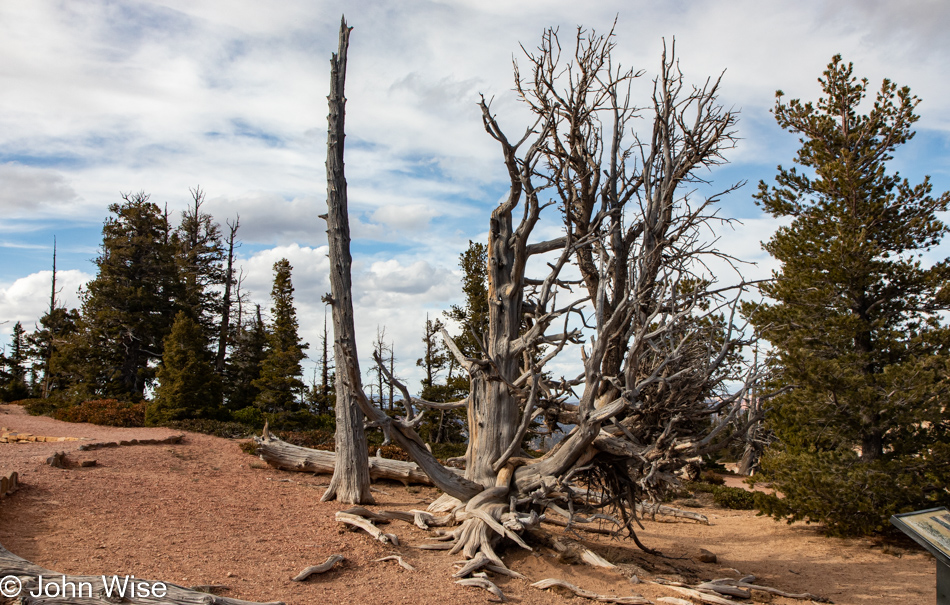
Caroline had the brilliant idea that we could relieve the growing discomfort by limbering up with a 1-mile trail rated as easy with a minor 200 feet of elevation change. Plus, it’s called the Bristlecone Loop Trail, so we’ll see some of those amazing trees we last saw years ago at the Great Basin National Park over in Nevada. What a damned stupid idea this was; why did I agree to this act approaching a kind of suicide for my poor knees? Since when can 2 degrees of descent make me want to cry? Please, invisible non-existent god, lift me off this trail and drop me at the nearest restaurant where I promise I won’t make a spectacle of my pitiful being by rubbing cheesecake on my knees as though somehow that might help.
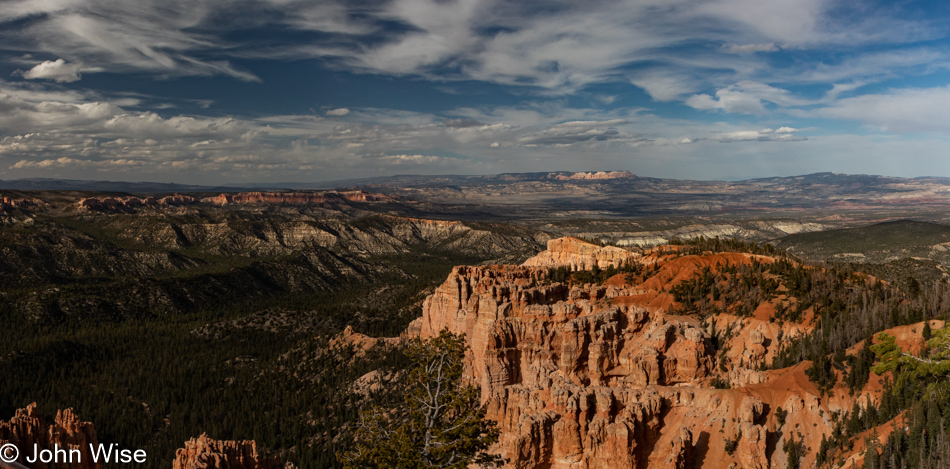
The end credits start to roll right here. There are no funny outtakes. We made it back to the car and drove 15 miles down the park road to the Bryce Lodge dining room to have one of the worst buffet-style meals we’ve ever had to suffer through. Did we care that it was poor? Heck no, while we had almost zero energy left, we were still able to muster some tiny bit of something inside so we could smile at each other and bask in the awe that we earned bragging rights to having had such a great day. Life rocks.
